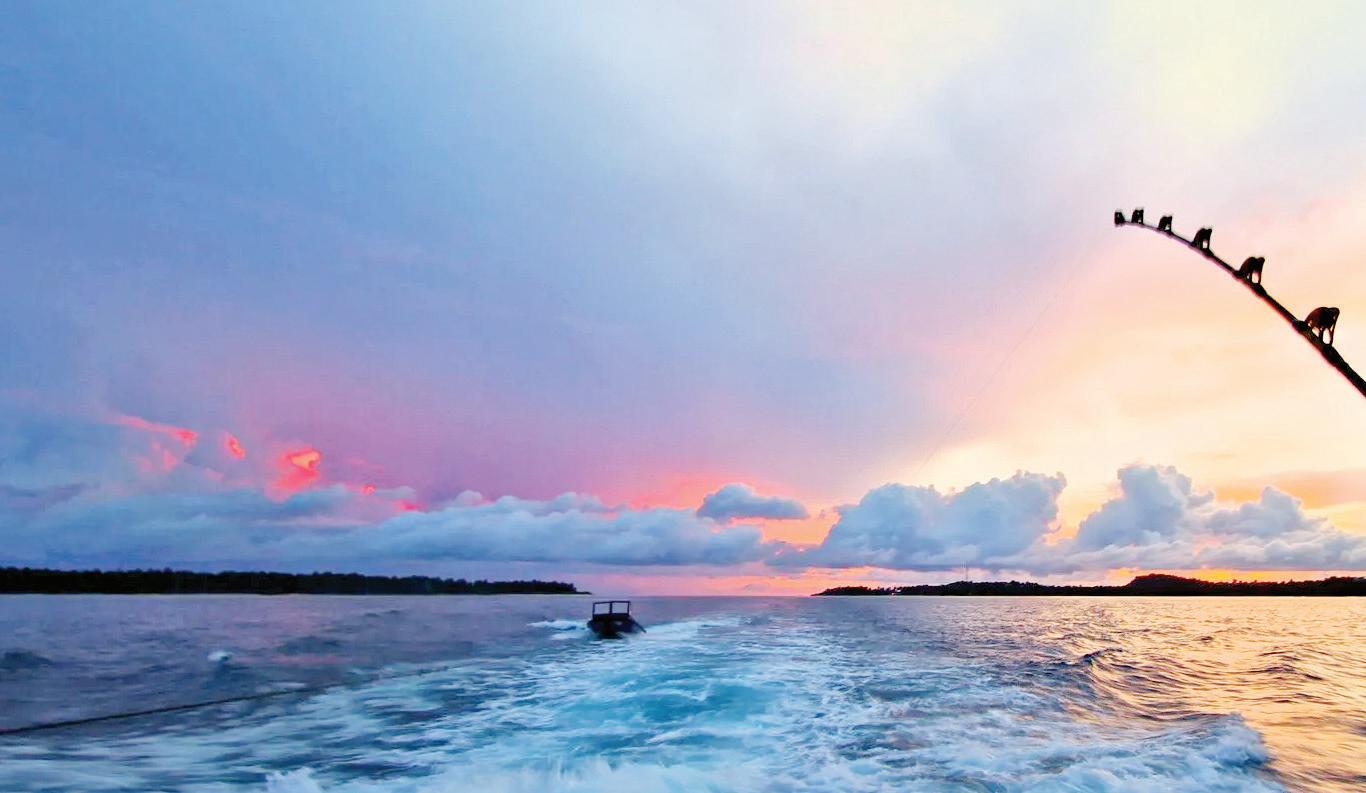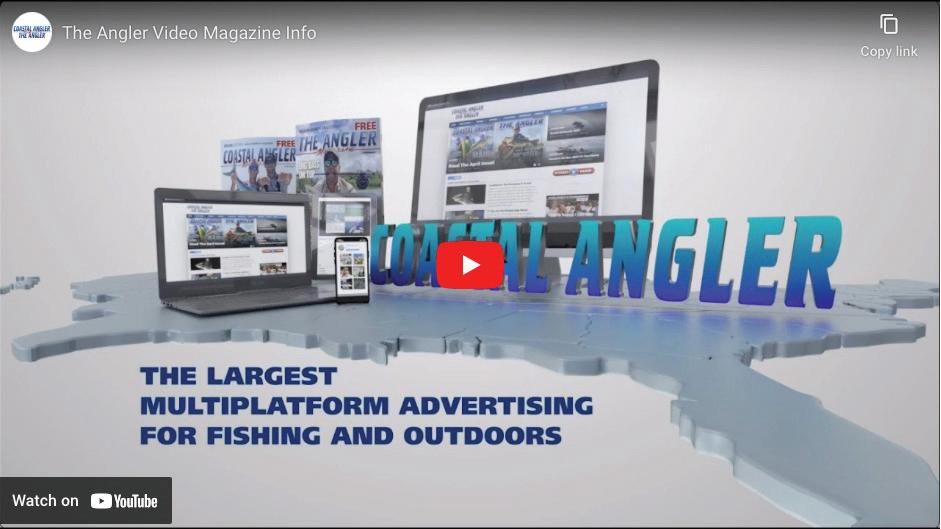
















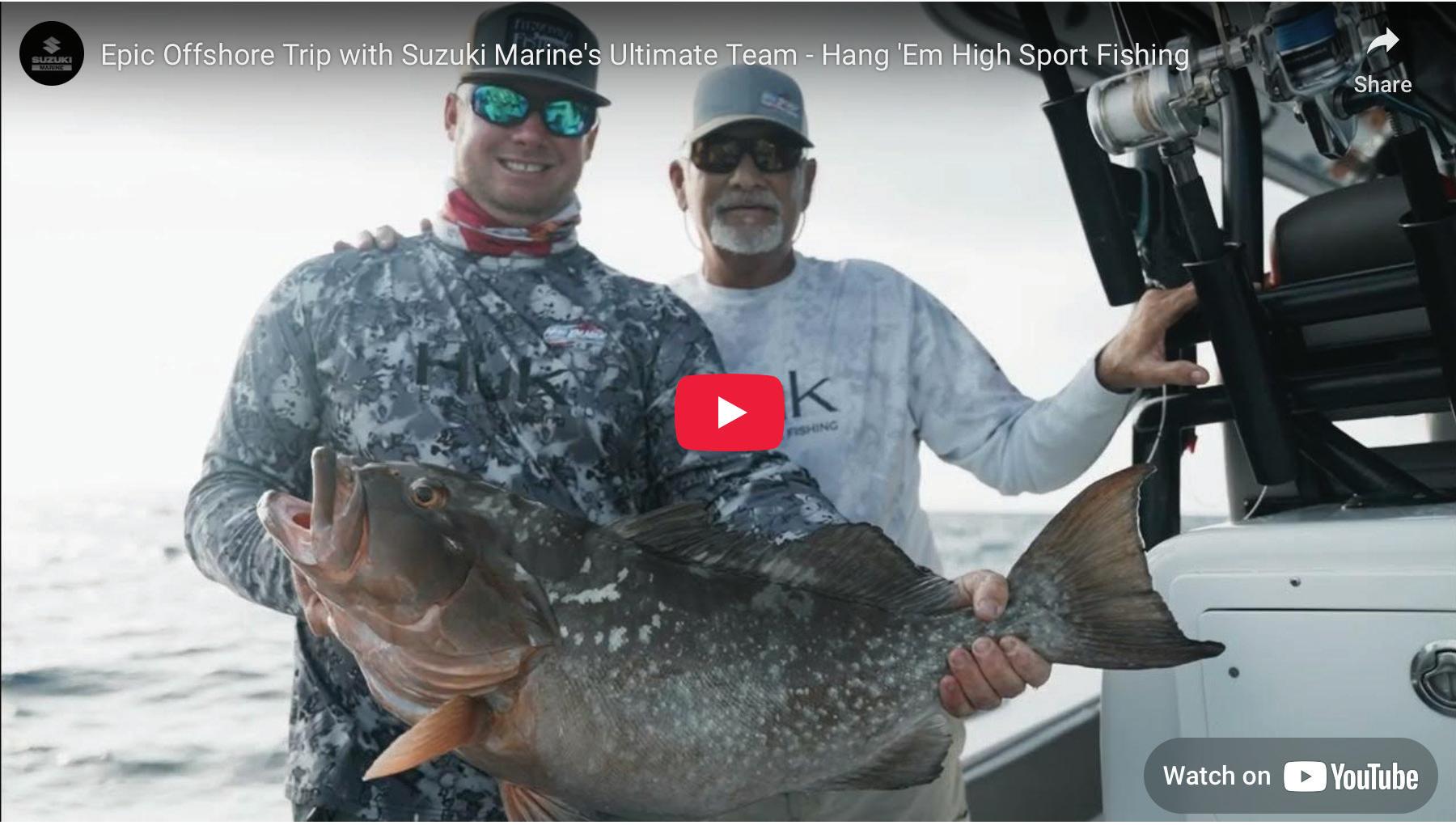
In 1965, Suzuki Marine launched its first outboard motor, a one cylinder, two-stroke portable known as the D55, generating 4.0kW (or approximately 5.5 horsepower). While this first Suzuki outboard was relatively small and basic, its significance to the recreational boating industry cannot be overstated.
Suzuki won its first Innovation Award in 1987 for its DT200 Exante “talking outboard.” Suzuki introduced its DF60 and DF70 fuelinjected 4-stroke outboards, winning the NMMA Innovation Award at the 1997 IMTEC Show for these outboards’ advanced technologies and new features. In 2003, Suzuki unveiled its DF250 V6, the industry’s first 250 horsepower 4-stroke outboard. This motor also won an NMMA Innovation Award at the Miami International Boat Show.
Suzuki broke new ground in 4-stroke power again in 2006 with the launch of its DF300, the industry’s first 300 horsepower V6 4-stroke and the first outboard to feature electronic remote control. This motor was also honored with an NMMA Innovation Award.
In 2017, Suzuki launched its flagship DF350A—the first 350 horsepower 4-stroke outboard and the first outboard of any size to feature the benefits and efficiency of contrarotating dual propellers in forward and reverse. This breakthrough motor also won the NMMA Innovation Award.
Suzuki revolutionized the boating industry

in 2022 with a Micro Plastic Collecting Device that allows the motor’s cooling system to collect micro plastic pollution as the boat is driven through the water. This system was made standard on all new DF115 and DF140 outboards around the world, allowing boaters to be part of the solution to the challenge of micro plastics in our oceans and waterways.
At the Miami International Boat Show in 2024, Suzuki “stole the show” by unveiling its Stealth Line outboards. Named a 2024 Top Product by Boating Industry Magazine, Suzuki’s Stealth Line combines legendary Suzuki power and performance with a stunning all matteblack finish and matching chrome black
graphics for a look that turns heads. The Stealth Line was an instant hit with boaters across the U.S., and Suzuki acted quickly to expand the Stealth lineup to offer eight popular models for a wide range of boats.
Who knows what the next 60 years will bring? One thing is sure, Suzuki Marine will continue to innovate and break new ground when it comes to giving all boaters the performance, efficiency, and reliability they deserve.
To learn more about Suzuki Marine, visit your local authorized Suzuki Marine dealer, call Suzuki Marine USA headquarters at (813) 687-7200 or visit www.suzukimarine.com.



APort Arthur, TX angler and his friends recently achieved an extraordinary feat—reeling in an enormous 884-pound bluefin tuna.
On April 10, David Esslinger and his friends were fishing in the Gulf when the massive fish struck his line with incredible force. He had no idea he was about to embark on the most intense battle of his fishing career. Thankfully, Esslinger had an eager crew by his side, ready to assist in landing this remarkable fish.
“Let me break down the day and the events for you. First off, for those who have never landed a fish the size of a car, this is no small feat. No one accomplishes this alone,” Esslinger posted on Facebook.
The group set out early Friday morning. By 9 a.m., after a couple of hours of fishing, they started noticing signs of a school of tuna breaking the surface of the calm waters. Suddenly, the right rigger snapped down with a forceful bite, signaling the start of Esslinger’s showdown against his monstrous tuna.

Esslinger recalls, “Big tuna started breaking the surface and our team’s spirits began to lift. That’s when it happened— the right rigger came down hard. The fish ran about ten seconds and spit the 12/0 mustad hook and the bait. As my heart sank, I came up on the drag and gave her 10 cranks. As soon as I engaged the clicker again the giant fish piled on again. That’s when the first 3/4 spool run at 35 pounds of drag started.”
Realizing what was at stake, his team quickly got into position for the ensuing battle, clearing lines and the deck.
“I had to crank it up to 45 pounds of drag on the Tiagra to slow her down. She responded with a rush to the surface. Carson was at the helm with Brad, TC, Jeff, and Colby, coordinating everything efficiently from cockpit to helm. We managed to get the fish up to the surface in just over an hour,” stated Esslinger.
After an exhausting five-hour battle of strength and endurance, Esslinger and his crew finally brought the massive bluefin alongside the boat. With shaking body and inoperable hands, Esslinger made his way to the side of the boat and screamed with utter shock, “What a giant bluefin! We did it!”
This impressive catch is seen as a trophy fish among anglers, celebrated for its enormous size and high-quality meat. And it was indeed enormous. Weighing in at 884 pounds, this bluefin tuna has set a new state record for the largest tuna caught in Texas, surpassing the previous record of 876 pounds established by Troy Lancaster in 2021.
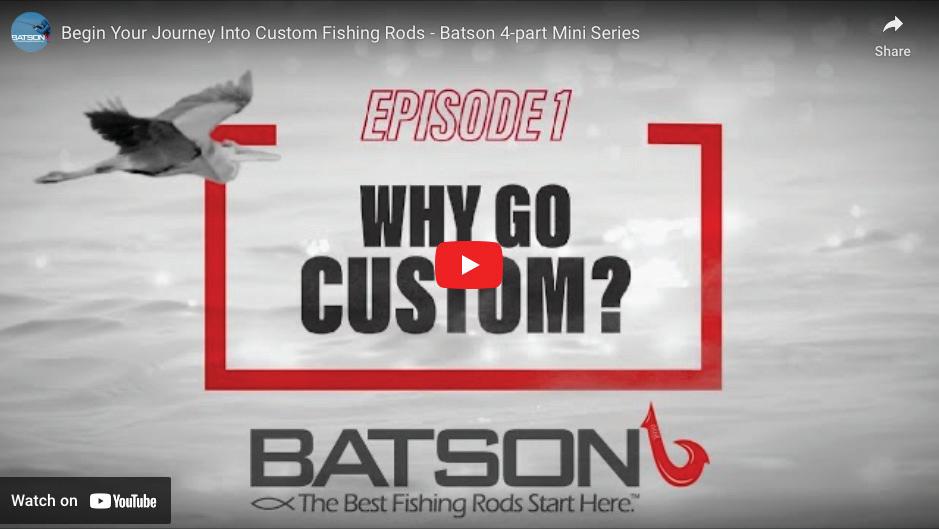

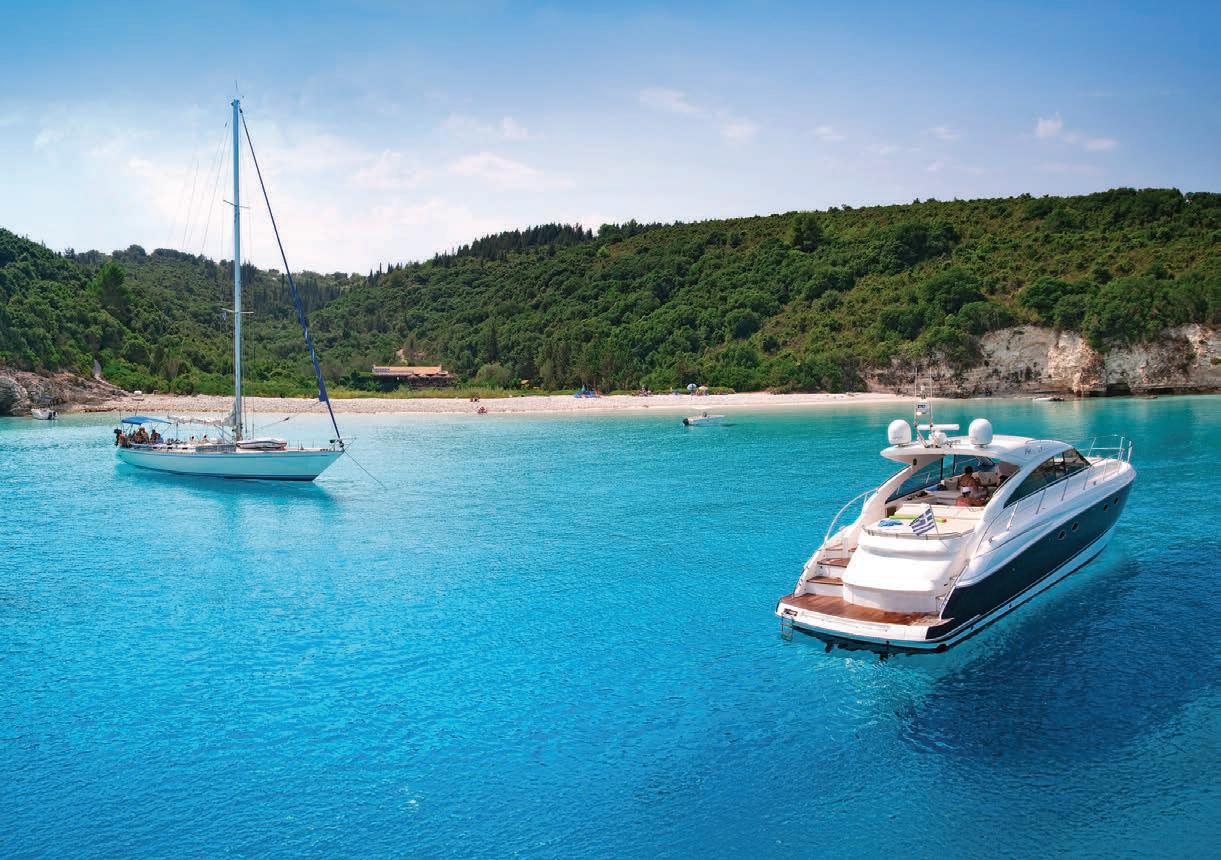


The choice for powerboaters and sportfishers. Get crystal-clear sonar, radar, and navigation that keeps you locked on target.
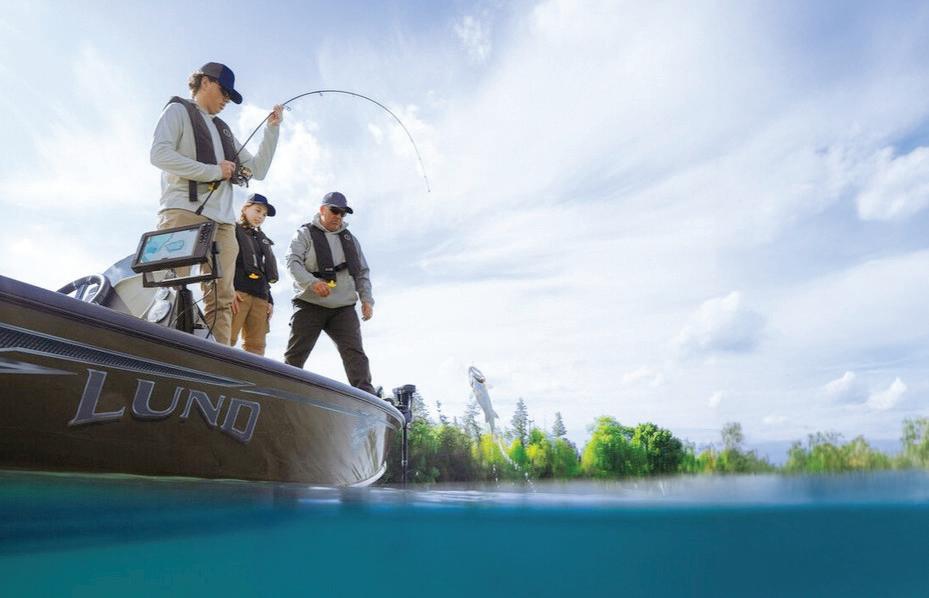

The ultimate fishing system helps you find and catch more fish. Leader in Marine Electronics Since 1957.


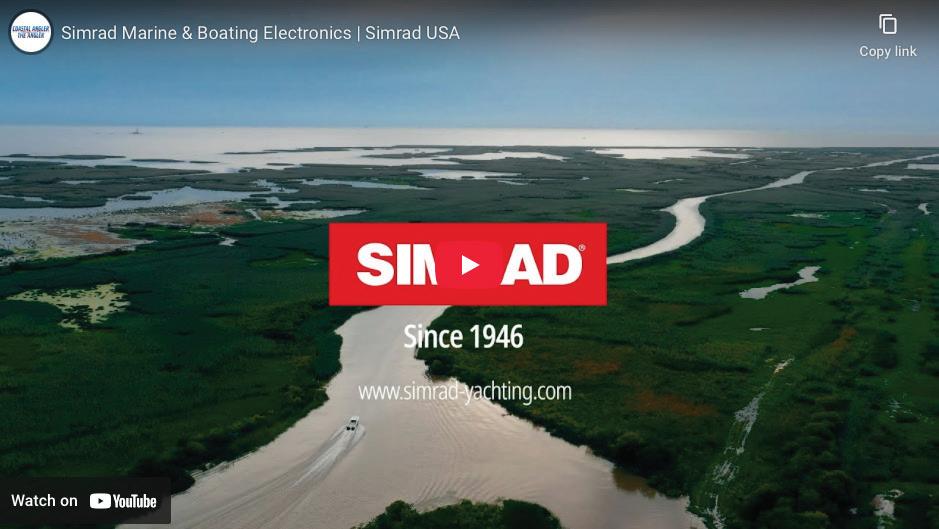
Whether you’re chasing trophy fish or charting your next offshore course, your time on the water deserves the best in navigation and




Alabama’s Dustin Connell Claims Third Championship Title at Bass Pro Shops REDCREST 2025 D.C. FOR THREE!

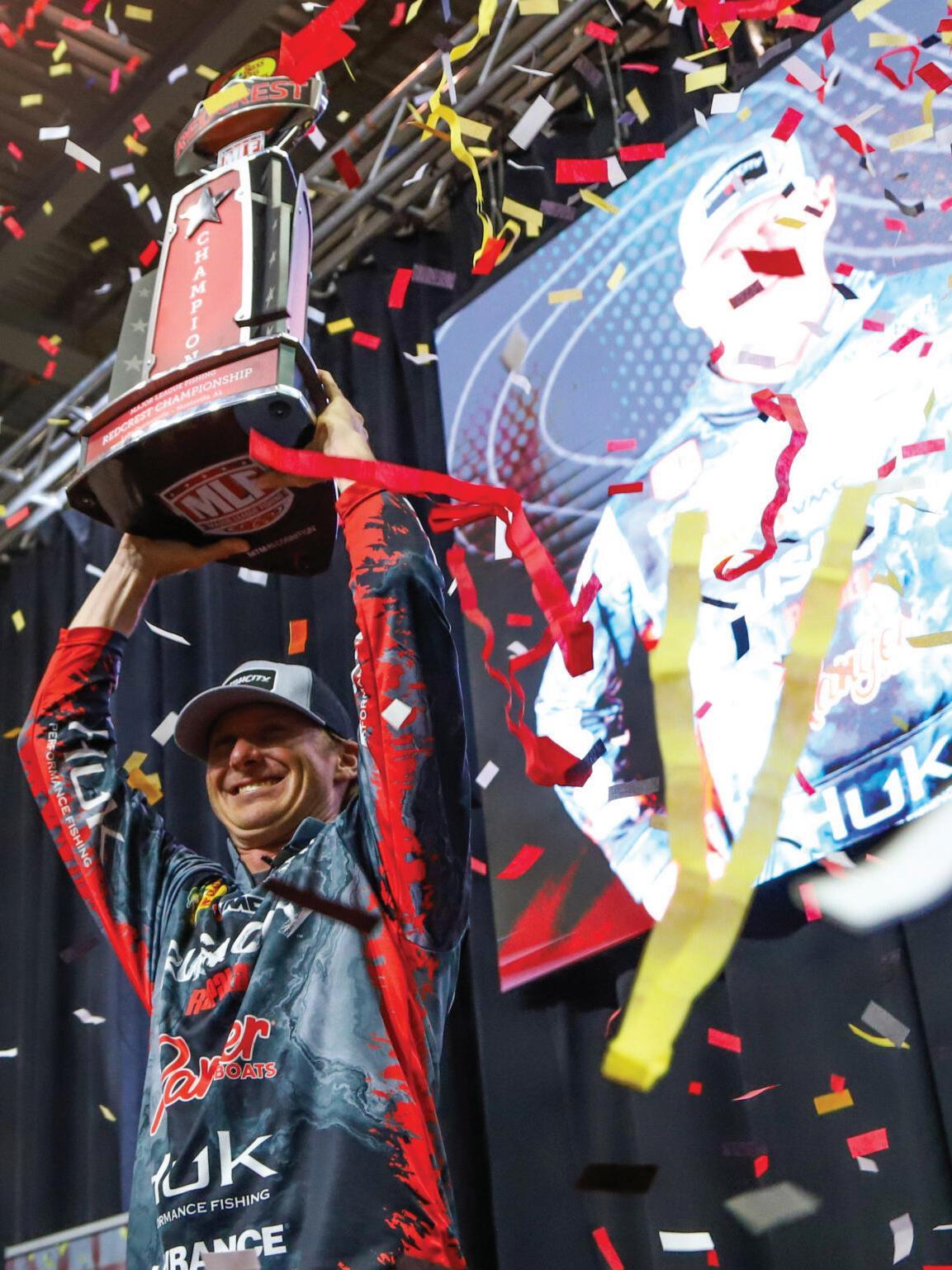
The 2025 iteration of Bass Pro Shops REDCREST Presented by MillerTech on Lake Guntersville marked the third time Major League Fishing’s championship event has been held in the bass-fishing mecca of Alabama.
For the third time, pro Dustin Connell of Clanton, Alabama, is keeping the trophy in his home state.
Connell ran away from the field on Championship Sunday, both figuratively and literally. After making a roughly 70-mile trek away from the history- and largemouth-rich waters of lower Lake Guntersville to the tailrace below the Nickajack Dam, Connell stacked up 87 pounds, 11 ounces on 27 scorable bass. The best single-day total of any angler at the event (despite a 65-minute delay due to weather), that was enough to hold off a late charge from Wesley Strader by 8-5.
Connell earned $300,000 for the win and further cemented himself as the best big-event performer going. The only angler to win REDCREST multiple times, he’s claimed the title in back-to-back years and three times total; he previously won on Lake Eufaula in 2021 and Lay Lake in 2024. He’s now just the third angler ever with three tour championship titles. Only Bass Fishing Hall of Famers Kevin VanDam and Rick Clunn have won more with four apiece.
This also marked his seventh total win on the Bass Pro Tour. Shortly after it became official, an emotional Connell said that, in some ways, it’s the most special one yet.
“I think just me winning the tournament doing my own deal, winning it with my style of fishing that I love, and then coming off of a couple tough tournaments and just a lot of adversity, I was very, very, very shook up,” Connell said.
Key for Connell was the caliber of fish he found during the Championship Round.
“I knew there were some big ones up there,” Connell said. “But I did not expect to catch the quality I caught today. I mean, it was unreal.”
Connell didn’t have an explanation for why he’s become so dominant on the biggest stage. He said he prepares for REDCREST like any other event. But he did note that, once he makes it to the Championship Round, he’s not easy to beat. Indeed, nearly half the time he’s made the Top 10, he’s wound up in the winner’s circle (seven out of 16).
Connell attributed that to his fish-to-win approach. He’s always looking for the winning bite rather than settling for a pattern that can earn him a check.
“When I make the Championship Round, I’m normally really dialed in,” he explained. “That’s the thing about me. If I don’t feel like I’m on a winning pattern, I typically don’t do well at all, because I’m always trying to win.”
Overall, there were 152 scorable bass weighing 427 pounds, 1 ounce caught by the final 10 pros on Sunday. Throughout the entire four-day event, the 50 competitors in REDCREST 2025 caught a total of 1,614 scorable bass weighing 4,456 pounds, 4 ounces.
For complete details and updated information on Major League Fishing and the Bass Pro Tour, visit MajorLeagueFishing.com.

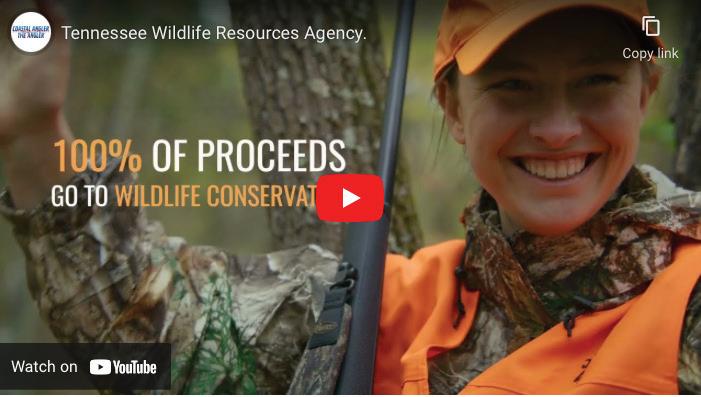
Forty-nine reservoirs stretch across the Tennessee Valley like a string of pearls. And for those who love to fish, those lakes are just as valuable. Whether it’s bass, crappie, walleye, or catfish, whether for sport, food, or just fun, you can find world-class lake fishing only hours away from any spot in the Tennessee Valley. From more than 11,000 miles of shoreline or while floating on more than 700,000 acres of water, residents and visitors will quickly learn why this area is considered one of the best fishing destinations in the U.S. and, some would say, the world.
Fishing from the shore can be restful and rewarding—and anyone can do it. All you need is a little intel about how to find a spot where the fish might be biting. Here are a few tips for successful shore fishing from the Tennessee Wildlife Resources Agency:
• Fish are often swimming near the shore in the spring and fall. If you’re fishing from the shore in the heat of summer, do it in the evening or early morning—or even after dark.
• Fish near-unique features such as docks, logs, trees, rocks, or rocky areas; aquatic vegetation; or places where creeks enter the water.
• When fishing in moving water, look at the surface for boils and breaks—this means there is some underwater structure blocking the current, which could be the perfect hiding place for fish.
• Begin fishing (casting) close and parallel to the bank, then work your way outward (fan casting) toward deeper water.
• If you don’t get any bites, try switching baits. If this doesn’t work, move to another hole.
• Wear polarized sunglasses so you’ll be able to see fish as well as submerged objects more clearly. (Your eyes will also be protected from the tackle.)
If you love outdoor sports—boating, hunting, fishing—and the natural world, or if you just like to observe wildlife, build birdhouses, maintain a bird feeder or are just curious about the critters in your backyard, the Tennessee Wildlife Resources Agency is here to help enrich your outdoor experience. Visit us at www.tn.gov/twra/


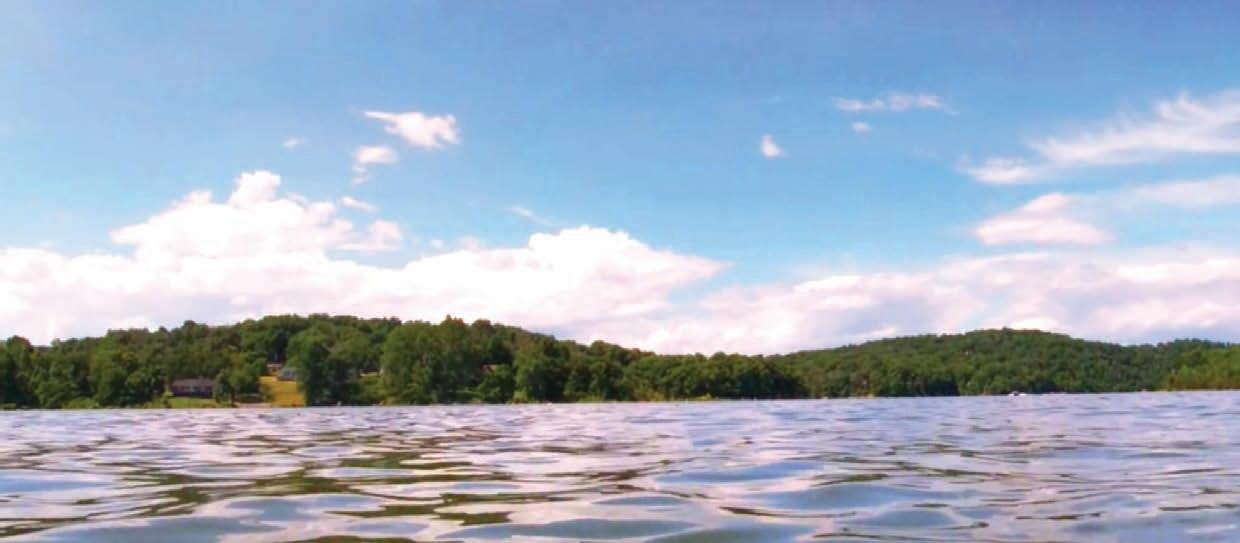

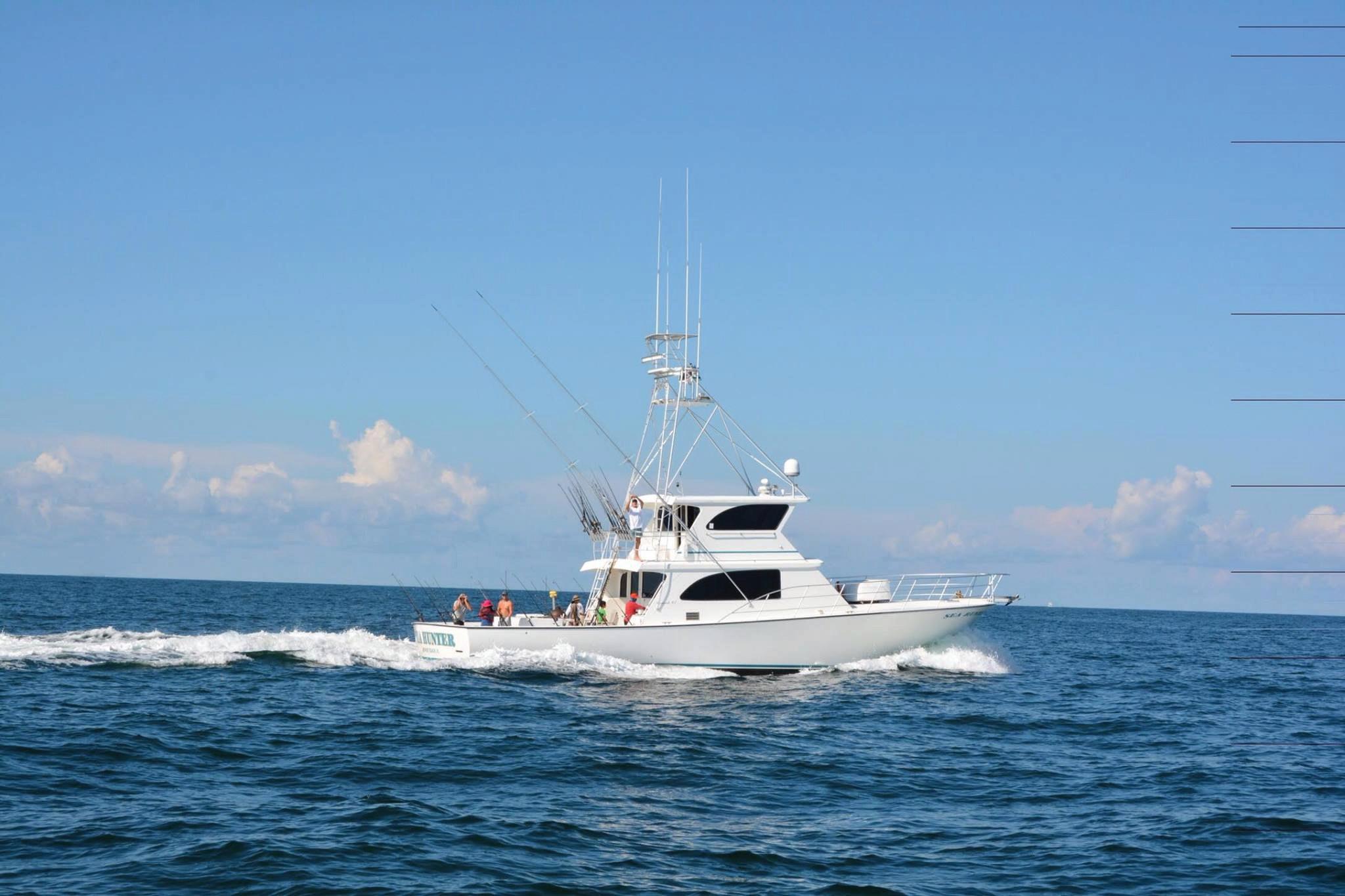


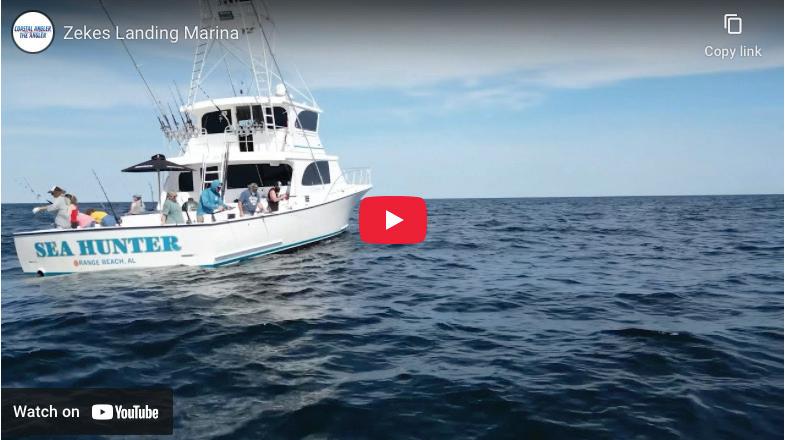

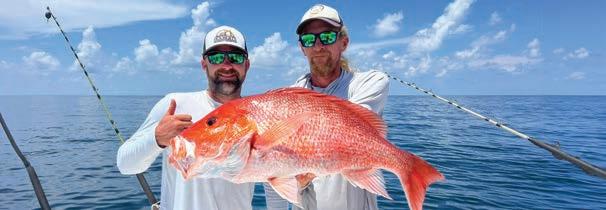
Nestled along the stunning Gulf Coast, Zeke’s Landing Marina in Orange Beach, Alabama, stands out as a premier destination for fishing enthusiasts and adventure seekers alike. Known for its picturesque views and vibrant marine life, this marina offers an array of fishing charters that cater to both novice anglers and seasoned veterans.
A Fisherman’s Paradise - Zeke’s Landing Marina is strategically located near some of the most productive fishing grounds in the Gulf of America. The warm, nutrient-rich waters are teeming with diverse species, making it an ideal spot for a successful day of fishing. Whether you’re after trophy-sized redfish, snapper, or the elusive marlin, the experienced charter captains at Zeke’s can guide you to the best spots.
Variety of Charters Available - From half-day trips to extended deep-sea adventures, there’s something for everyone. Families can
enjoy relaxed inshore fishing trips, while adrenaline junkies might opt for overnight excursions targeting bigger game fish. Each charter is designed to provide a unique experience, tailored to the group’s preferences and skill levels.
Experienced Captains - You’ll find a team of knowledgeable and friendly captains who are passionate about fishing and committed to making your trip enjoyable. With years of local experience, they not only know the waters like the back of their hand but also share valuable tips and insights about fishing techniques, local ecology, and the best practices for sustainable fishing.
Family-Friendly Atmosphere - The marina’s family-friendly atmosphere makes it an excellent choice for families looking to bond over an outdoor adventure. Kids can learn the ropes of fishing, participate in catch-andrelease practices, and enjoy the thrill of reeling in their first fish.
Additional Amenities - We offer a variety of amenities to enhance your visit. Enjoy onsite dining options that serve fresh seafood and local cuisine, or relax at the marina’s beautiful surroundings after a day on the water. Additionally, the marina hosts various events throughout the year, from fishing tournaments to community gatherings, ensuring there’s always something happening.
Bring Us What You Caught! Have it grilled, blackened or fried with crispy fries, and house coleslaw. Served up family style for an unforgettable end to your charter trip.
Dockstore - We offer top brands like: AFTCO, Costa, Reefs, Phins, Sun Bum, Swig, Maui Jim, Wild Republic, Bogg Bags, Ice Mule, Gecko, Tervis, Toadfish and much more! We also offer: Fuel, beverages, snacks, beer, hard seltzers, wine spritzers, sunscreen, branded t-shirts, hats, coolers, marine supplies and more!
Tim Barefoot



Can you say hallelujah?

HALLELUJAH!!! The powers that be say we can finally catch and retain grouper as the season opens back up May 1 for most of the Southeast Atlantic. Decades ago, I never thought I would have said “grouper” and “season” in the same sentence, much less enduring this nine- or 10-months out of the year closure we’re experiencing now.
We recently took a recon trip to the edge to catch African pompano, but caught everything but African. The barracudas and sharks are in numbers never seen before (by myself and a LOT of my friends), along with the American red snapper (ARS) and gag grouper. For anyone doubting the American red snapper and/or gag grouper numbers,
please speak up now...or please come fishing with me!
We decided to leave the shark- and barracuda-infested deep water to catch some legal dinner fish like grunts and seabass. We came inside a good ways and stopped on a pretty piece of bottom and it was nothing but gag, scamps and ARS bites. BAM! BAM! BAM! Rolled back in another 10 miles knowing we were going to catch some seabass and grunts…and got nothing but gag and ARS bites. After that, we decided to go another eight miles inside specifically for sea bass, finding traditional sea bass numbers. Fishing around in that general area, we ran out of all frozen cigar minnows and cut Spanish mackerel chunks before we could catch a good limit of sea bass.
I said all that to say this: fish the pretty bottom marks of bait and structure using the correct tactics and you will have a heavy box of good fish at the end of the day.
All the best fishing!
For more info, check out Tim Barefoot’s YouTube channel and website, barefootcatsandtackle.com.

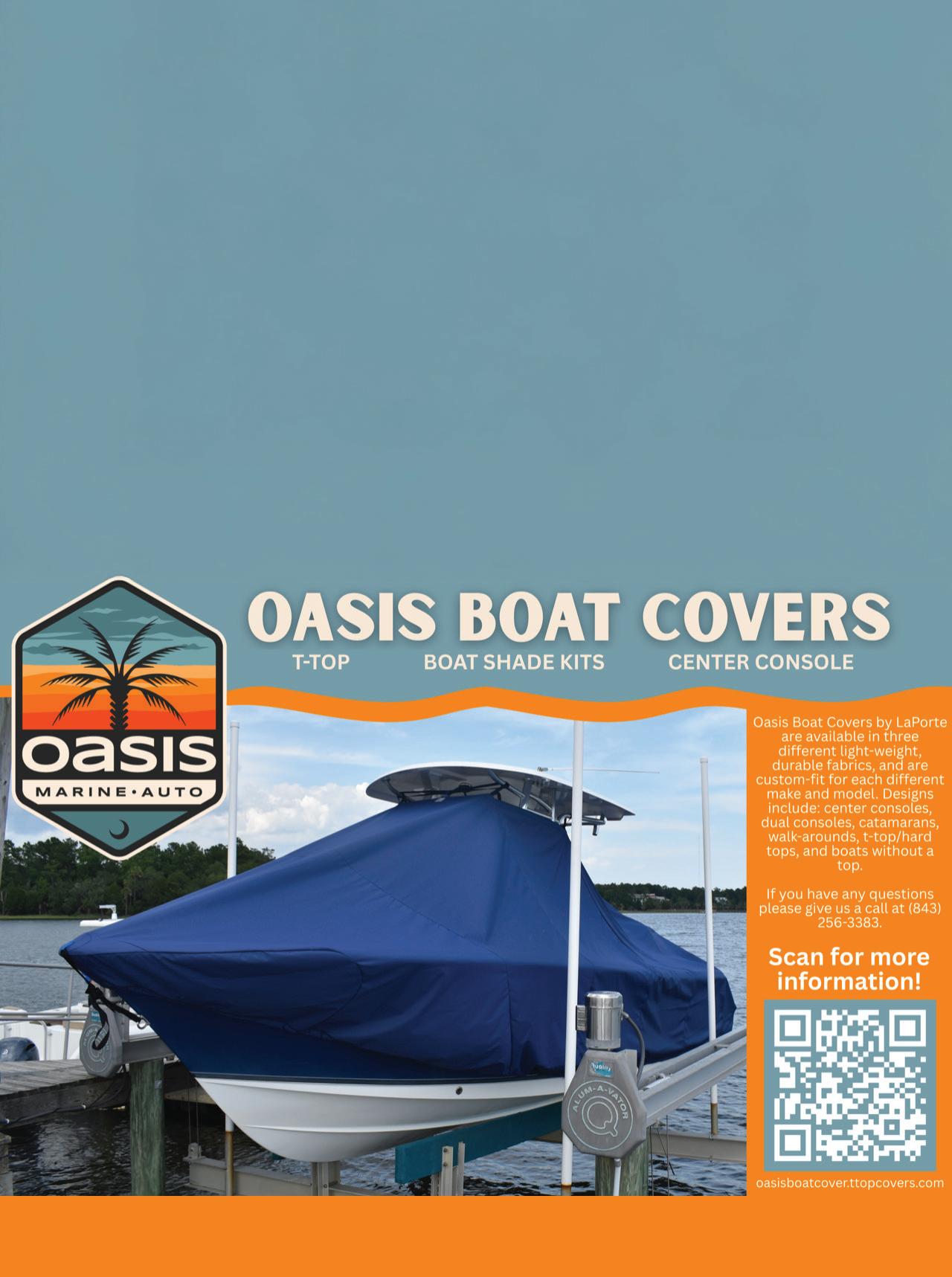
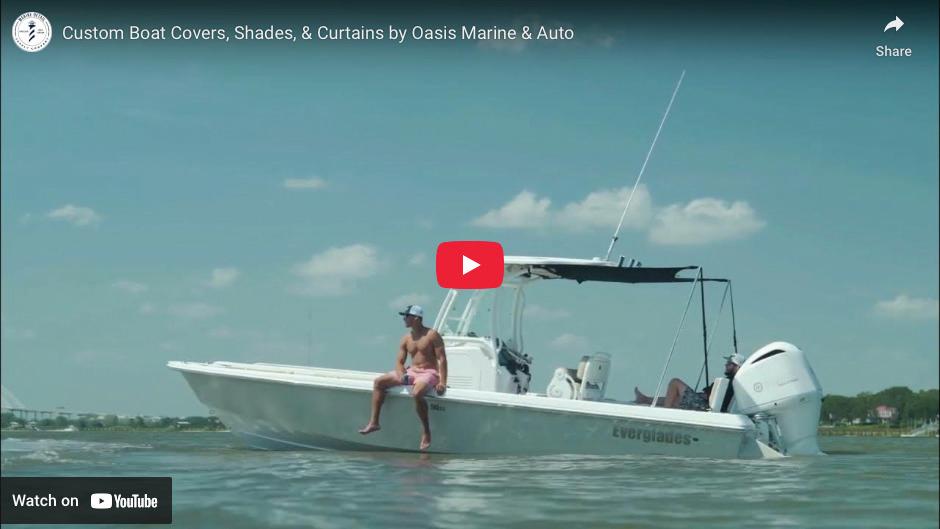





Dometic has revolutionized the gyrostabilizer industry with the recent launch of its breakthrough DG3 — winning a 2025 NMMA Innovation Award during the most recent Miami International Boat Show. Dometic’s anticipated entry into this new business category was selected for recognition by a panel of expert judges for a variety of reasons.
One big reason is the DG3’s groundbreaking spin-up and spin-down times. The DG3 reduces spin-up time by more than 65%, reaching full readiness in just 16 minutes, compared to the typical 50 minutes required by current systems in the market. No more long waits—just get ready to sail out. The system’s downtime is equally impressive, fully lowering in just 20 minutes, a significant improvement over the eight or more hours (15X faster) required by current systems.
This means the DG3 minimizes energy consumption and allows boaters to continue their activities—whether boating or fishing— without needing to adjust their plans to accommodate stabilization setup or downtime.
The system introduces innovations in energy storage and recapture, enabling the battery to recharge efficiently. It also incorporates Dometic’s proprietary, industry-proven
Inverted Roller Screw technology for true dynamic control and significantly improved roll reduction performance over a wide range of sea sates. In addition, the push-pull motion of Dometic’s all-electric procession actuator is used to create power that contributes to running the system. During spin down, Dometic’s regenerative braking technology recharges the system’s dedicated 48V Lithium-Ion spinup battery for the next use. Overall, the DG3 reduces power consumption by an impressive 40% compared to competing solutions.
Durability and reduced maintenance were also key goals for Dometic engineers. Dometic’s proprietary all-electric procession actuator replaces hydraulic actuators that require fluid and are prone to troublesome leaks. The solution enhances long-term durability, minimizes required service, and reduces total cost of ownership. Featuring a slower-spinning flywheel, larger, more robust bearings, patentpending inner race cooling, parallel path cooling, and a titanium heat exchanger, the DG3 is designed to stay cool and operate reliably for the long run.
Dometic designed the DG3 as an easy “drop-in” replacement for other comparably sized systems available in the market today. The DG3 fits within the same footprint and

clearance specifications and features reversible mounting feet to address common challenges encountered by installers. To meet the needs of today’s boating market, Dometic’s DG3 is compatible with 12-, 24- and 48-volt house battery systems.
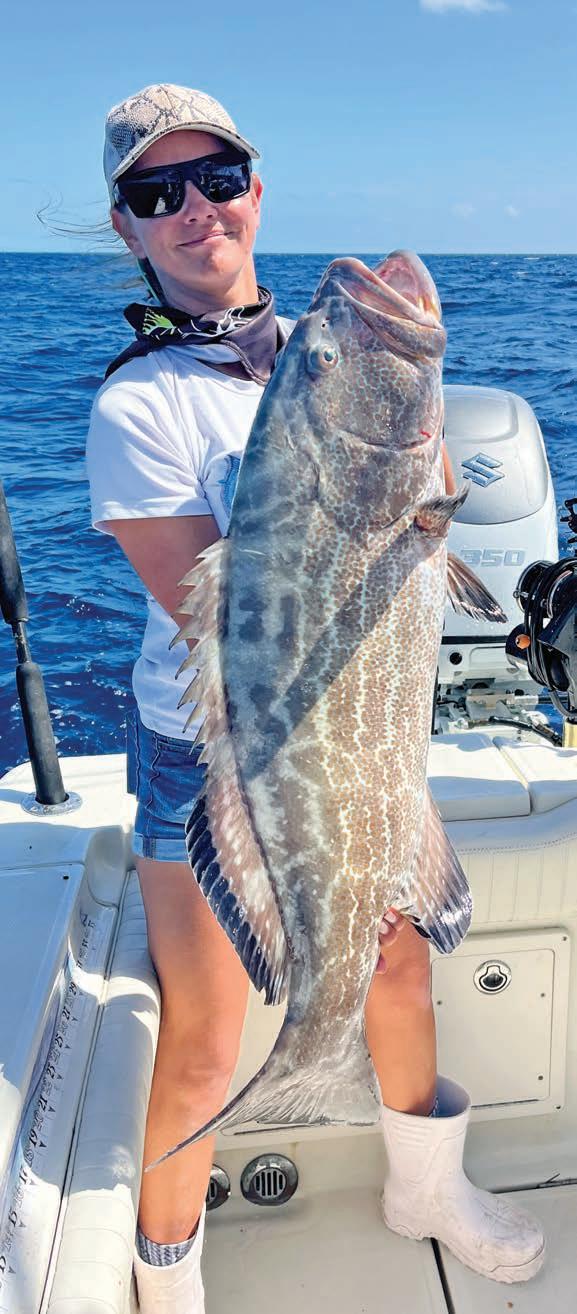

By Capt. Quinlyn Haddon
May is one of my favorite months for offshore fishing, as the fishing seasons coincide with good weather. Being spared from the beginning of hurricane season until next month, right now is the most reliable time to get nice weather days to make the trek to deeper waters.
Mahi season has begun to be more consistent, making the trips offshore more exciting and worthwhile. When making the long drive to the humps for blackfin tuna, or the swordfish ledges, it’s always a plus to know that you have opportunities to catch mahi on the way there and back. Staying alert for weedlines, diving birds and floating debris makes the trip seem like less of a chore, and keeps that fisherman’s optimism
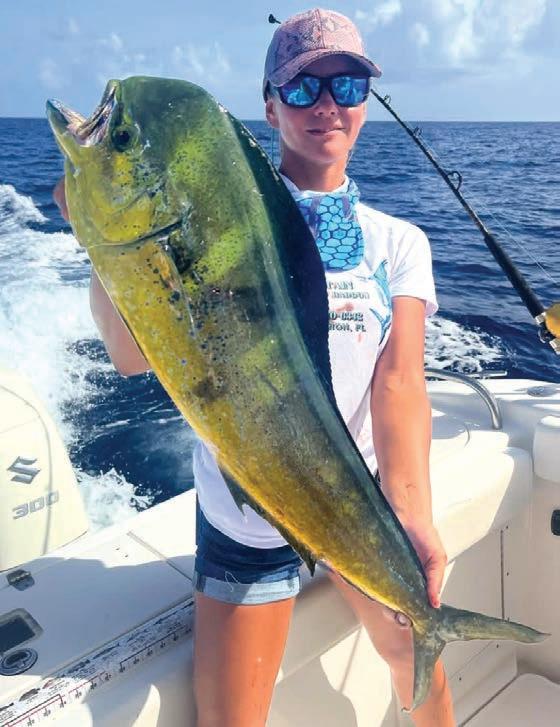
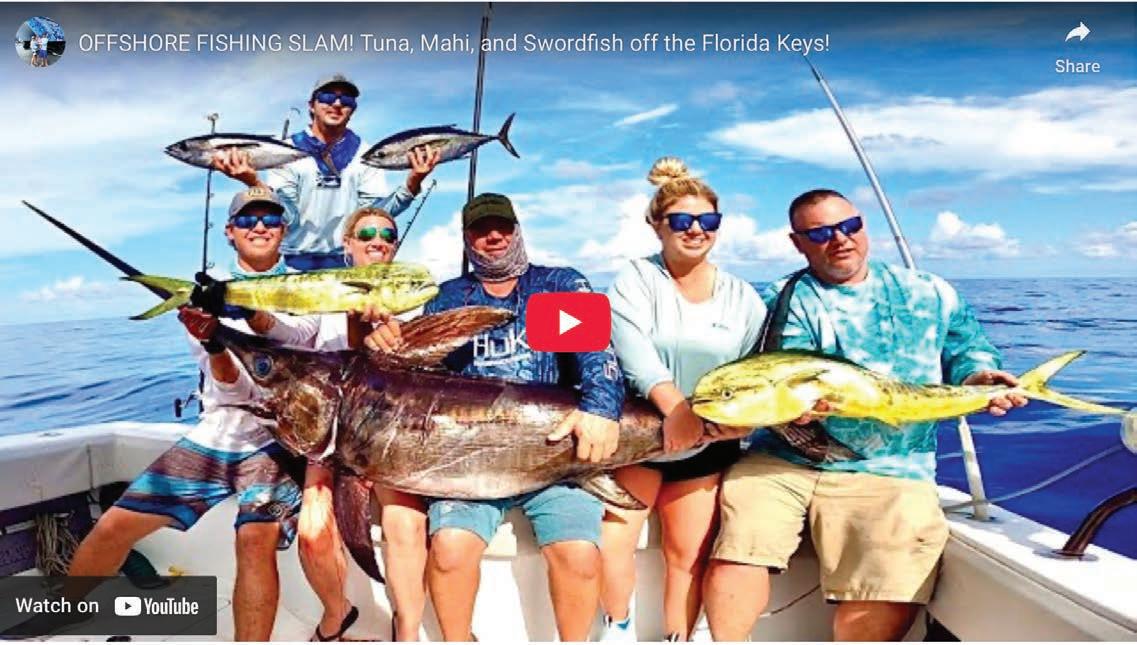
alive for more of the venture, knowing you’re still on the hunt nearly the whole way back to the dock.
With the prevalence of mahi, tuna, queen snapper and swordfish in our deepwater fishery, May 1st marks the opening of grouper season here in The Florida Keys, providing additional catching opportunities for both nearshore and offshore adventures. We also welcome the opening of tilefish this month.
For those with an electric reel setup in their arsenal, this is a great month to get out there and scout for new deepdropping locations. With snowy grouper and yellowedge grouper found peppered throughout the area, test dropping on new found spots can be a fun addition to mahi fishing. As you run aimlessly offshore looking for signs of dolphinfish, you may notice you run over a ledge or depth variation. Anything that looks fishy after about 500’ could be your next honeyhole.
If this is a new area especially, use a variety of baits on your 5-hook deepdrop rig to ensure your best chances of surveying the location. Squid is always a good choice offshore, with many species unable to resist its potent aroma, but chunks of fish should be included to entice a grouper bite. With bait sizes matching hook sizes, its a good idea to make your own rigs with different sized hooks if you’re unsure of the species that might be available at a new place. Affix
larger hooks near the bottom of the rig for grouper baits, and smaller hooks near the top with squid for tilefish.
If offshore isn’t your thing, there are plenty of grouper on the reef and wrecks nearshore this time of year as well. However, after releasing these sandwich providers since their closing January 1st, every local fisherman in town will be hitting the wrecks hard for the recaptures now that season is open. Before they face all this pressure from being targeted nearshore, particularly on publicly known wrecks, it’s a good time to put some skin in the nearshore grouper game.
After a short closure for the month of April, amberjack has also opened again this month. These fish are easy to find, and add some nice backbreaking action to the grouper hunt.
Whatever your flavor of fishing is, The Florida Keys has you covered this month. With the anticipated opening of grouper season at the beginning of May, and schools closing for summer break nearing the end, it’s a good idea to get booked for a charter before you arrive on your Keys vacation.
Give us a call at Sweet E’nuf Charters to get tight.
Capt. Quinlyn Haddon guides with Sweet E’Nuf Charters out of Marathon, The Florida Keys. (504) 920-6342. www.captainquinlyn.com; IG: @captainquinlyn


Furuno has again raised the bar for the most powerful, easiest-to-use Multi Function Displays (MFDs) with the new NavNet TZtouchXL. Five sizes of MFDs provide all the functionality boaters desire and never-before-seen features.
An all-new chart offering called TZ MAPS sets these MFDs far ahead of the field. Navigators have complete control of data they download, such as raster or vector charts, satellite photos and bathymetric data. Plus, they can select specific areas to keep updated. Objects can be turned on and off in the Layers menu with a single swipe on the display. Users can create custom objects or update charted objects, on the system on the fly. Custom objects can be shared with other users through
offers “off the charts” bathymetric data with contours that can be easily configured to a resolution three times better than anything else on the market. Bathymetric data can be overlaid onto navigation charts. All of this can be rendered with custom color palettes and terrain shading.
Purchase of TZ MAPS areas also unlocks AI Routing to plan routes. The free TZ iBoat app for mobile devices allows at-home planning that transfers to TZtouchXL. With a free TimeZero account, waypoints and routes can be backed up or retrieved from the cloud. Charts can be purchased directly from the MFD!
DRS Radar connection unlocks two new safety features: Risk Visualizer™ and
AI Avoidance Route™. These two features provide 360° representation of collision risks and a route around them that can be sent to a Furuno NAVpilot autopilot.
The series comprises five MFDs with displays from 10” to 24”. All feature a powerful hexacore processor for lightningfast response.
All magnetron or Solid-State Doppler Radars, high-powered Fish Finders, AIS, Autopilot, and Deep Water Multibeam Sonar options of NavNet TZtouch3 are compatible with TZtouchXL. Many of the must-have features are also available, including Target Analyzer™, Bird Mode, Rain Mode, and PIN Code Lock. The TZT10X, TZT13X, and TZT16X feature a built-in 1kW TruEcho CHIRP or CW Fish Finder and built-in 235kHz or 455kHz CHIRP Side-Scan. Two new remote-control options are also available.

To learn more, visit: www.NavNet.com


You want AI Routing! Let TZ MAPS with AI Routing make route planning a snap. Don’t take our word for it. Scan here to see for yourself how easy it is!

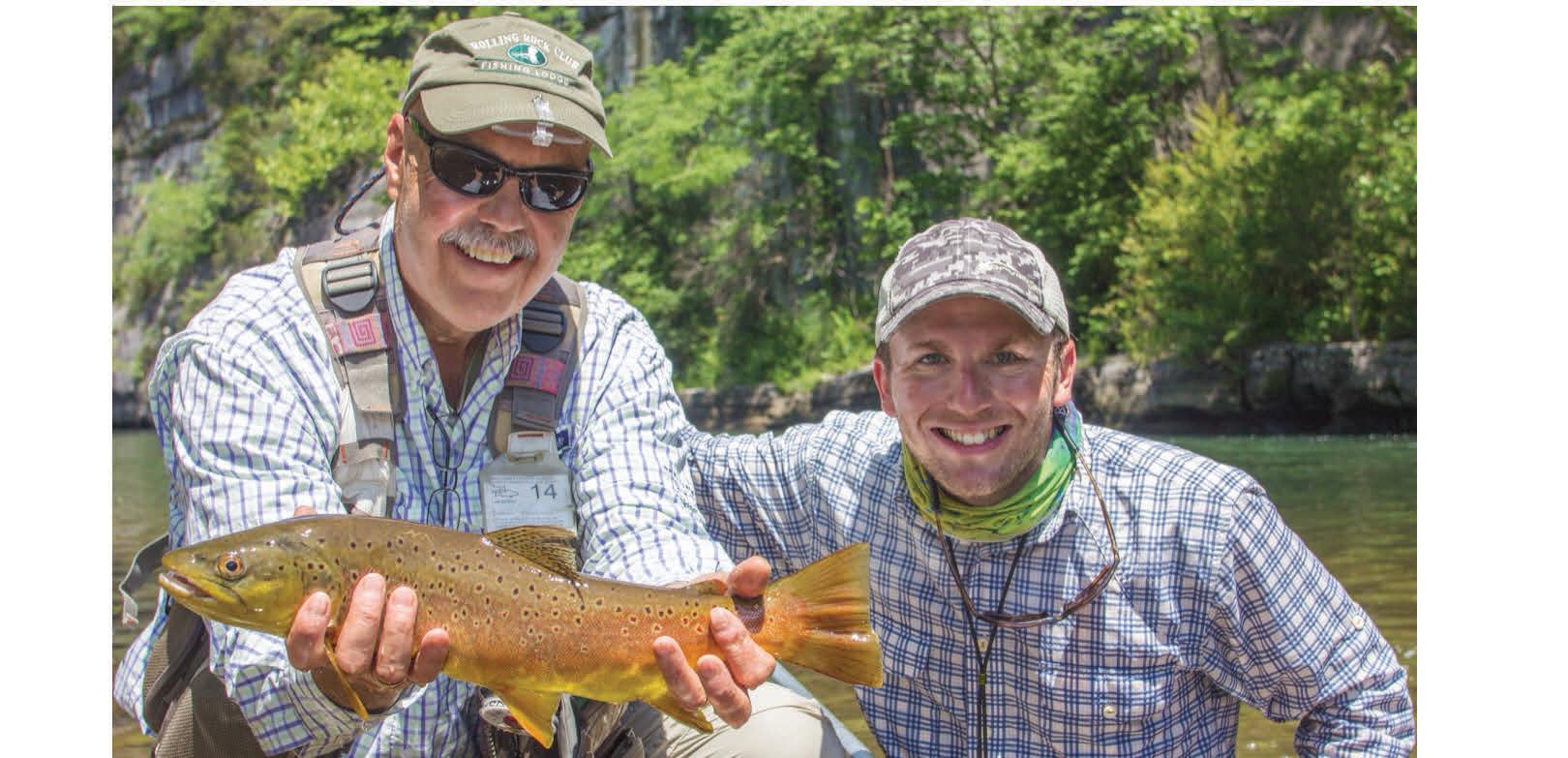



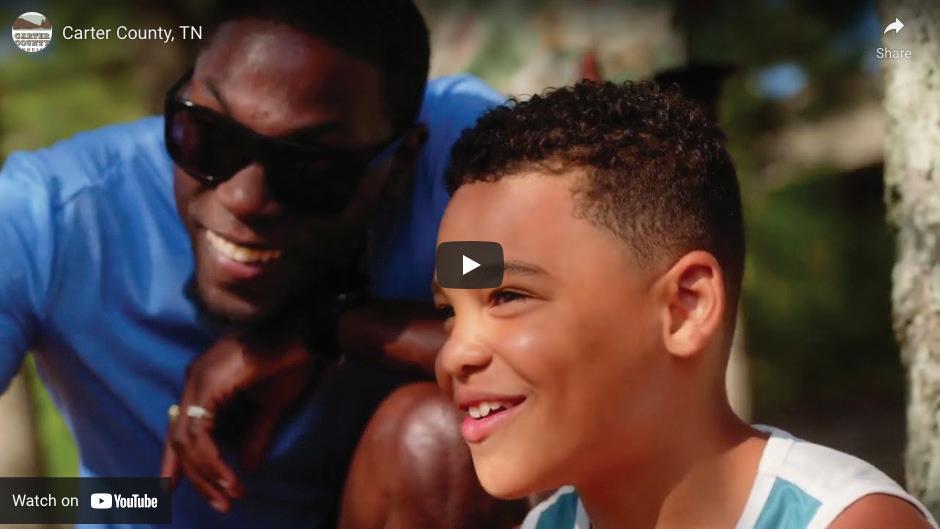



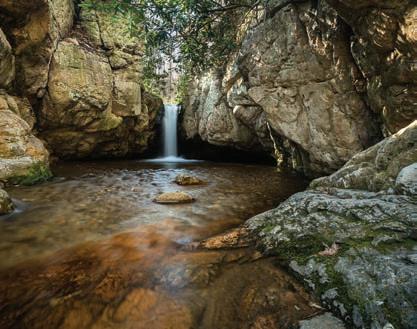

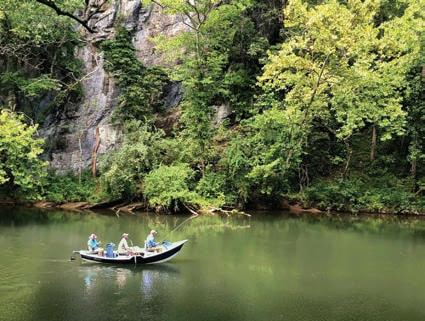









By Paul MacInnis
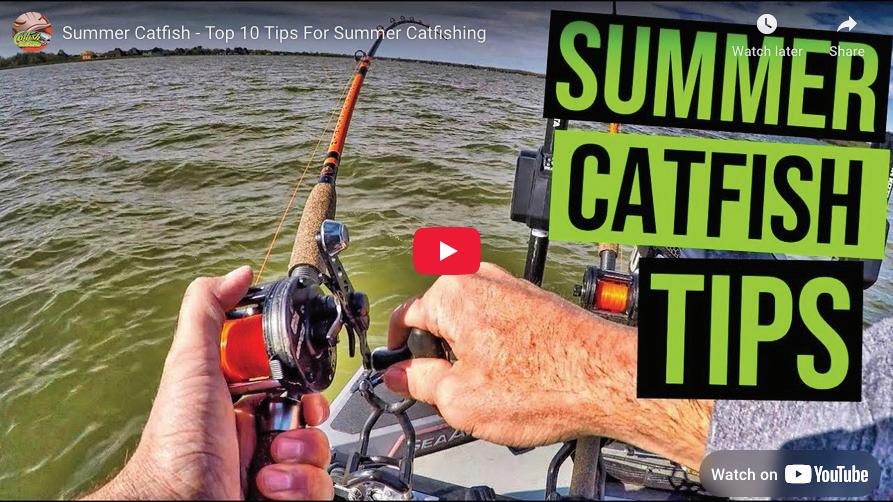
Catching channel catfish can be a lot of fun and super rewarding—these guys fight hard! And the nice thing about catfishing is you don’t need fancy baits or tackle. If you want to target bullheads and smaller pan-sized catfish you can use baits you gather right out of the river like grass shrimp and mussels. You can also use earth worms or small chunks of hotdog. Fish these baits on a 1/0 Aberdeen hook and add just enough split shot to your line to hold bottom.
But I prefer to target bigger channel catfish, the bigger the better, using peeled shrimp for bait. You don’t need fresh shrimp, a bag of frozen shrimp from your local bait shop works fine. I also like to use cut bait as it holds up well to the bait stealers. Cut mullet or chunks from just about any fish work.
I use a standard fish finder rig. Run the line through a one-quarter to one ounce egg sinker, choosing just enough weight to hold bottom. Tie the line to a swivel and add about one to two feet of twenty pound test monofilament to the other end of the swivel. To the end of this leader I tie a 4/0 Team Catfish TC84Z circle hook.
Baitcasting gear used for bass fishing and 2000 to 3000 sized spinning tackle works fine for channel cats. You can get by with inexpensive monofilament, but I prefer a good quality 10-pound test braid like Platypus Platinum Plus. Braid won’t bow out as much as monofilament due to wind or current so it gives you a straighter connection between rod tip and bait. This kind of tackle can get sporty if a 10-pound-plus catfish takes your bait, but sporty is exactly what I am looking for!
Popular wisdom says you should fish your baits in the deeper bends and holes. I fished that way for years and caught plenty of one to five pound catfish, but bigger fish eluded me. Many rivers (even lakes) are loaded with little coves and basins. I’ve learned if there is three feet or more of water in these basins there’s a decent chance there will be some nice
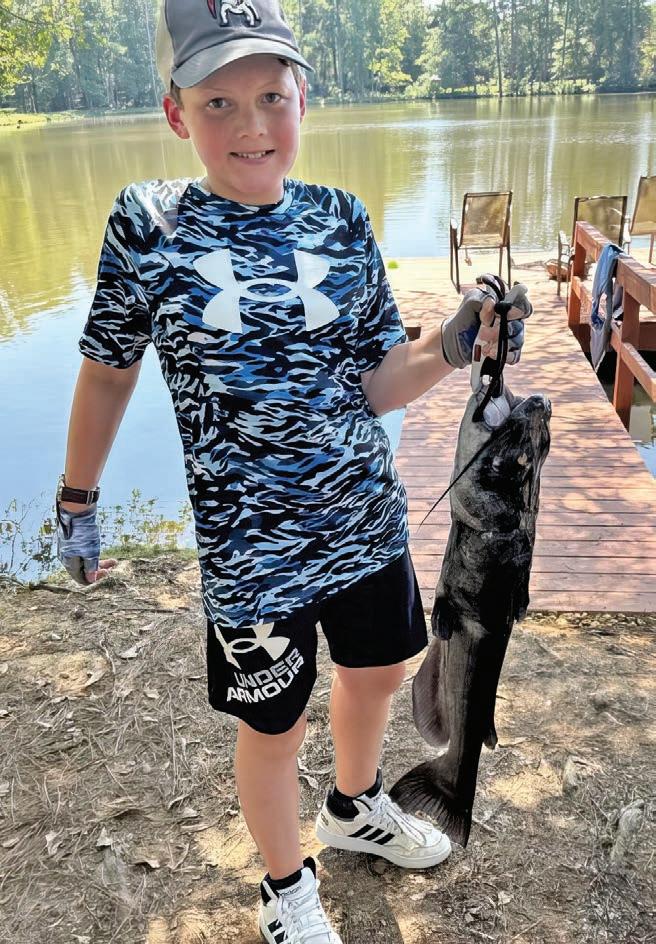
catfish there. I’ll park my kayak at the edge of the opening and cast a bait towards the center of the mouth of the cove, trying to place my bait in the slack water but close, within 10 feet or so, of the current. If I am feeling ambitious I’ll toss a second bait towards the back of the cove. Most of the time the biggest catfish go for the bait close to the cove mouth...but that isn’t always the case.
I like to let the circle hook do all the work so I’ll leave the rods in the rod holders until a fish puts a good bend in the rod and maybe even takes drag. Keep your ears open for loud splashes as channel cats will often thrash at the surface right after feeling the hook. Also watch your line. Catfish don’t always take the bait going away from you. If your line goes slack
or your bait changes position reel up tight and see if there is a fish on the line. Finally, if you start catching a lot of bowfin you might want to move elsewhere (unless you like catching bowfin) because I find catfish and bowfin seldom share the same locations.
Channel catfish can be aggressive predators and many a bass angler has been surprised when a big cat grabs their bass lure. Most of the time I wouldn’t advise tossing lures as an efficient way of targeting catfish, but some years there is an exception that happens in spring into early summer. Winter and spring are typically dry season and water levels drop. Fish congregate in what deeper holes are left and become aggressive due to high competition for food. This is one time
when you can readily catch catfish on lures and even flies. I like small plastic worms and other soft plastic baits bumped slowly along the bottom. Keep in mind catfish are primarily scent feeders so dousing your lure with a decent fish scent helps.
During low water you’ll occasionally run across a real treat, a sandy bottom pool where you can spot catfish and sight cast to them. I highly recommend a quality pair of polarized sunglasses with an amber tint and mirror coating to help you tell catfish from gar and tilapia.
I suggest you give fishing for channel cats a try, especially on those days when “gamefish” don’t cooperate. Be patient, stay persistent, and enjoy the process!


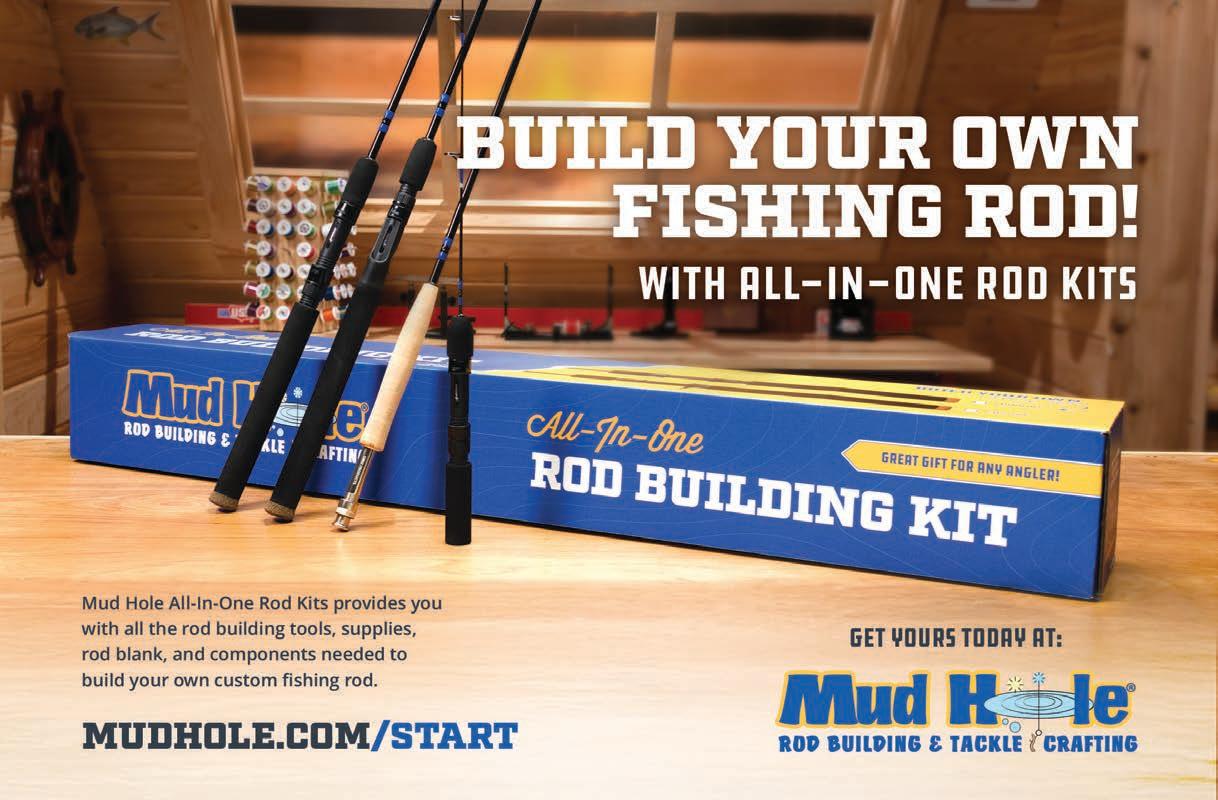

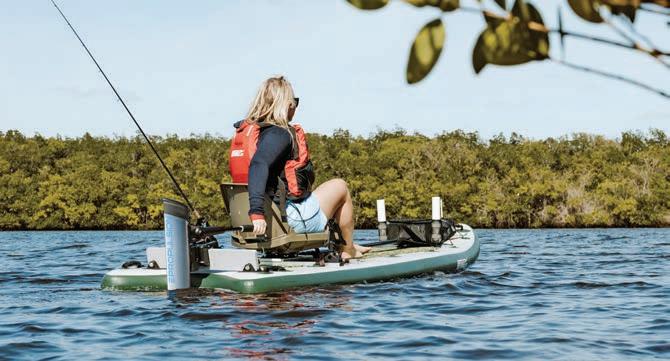

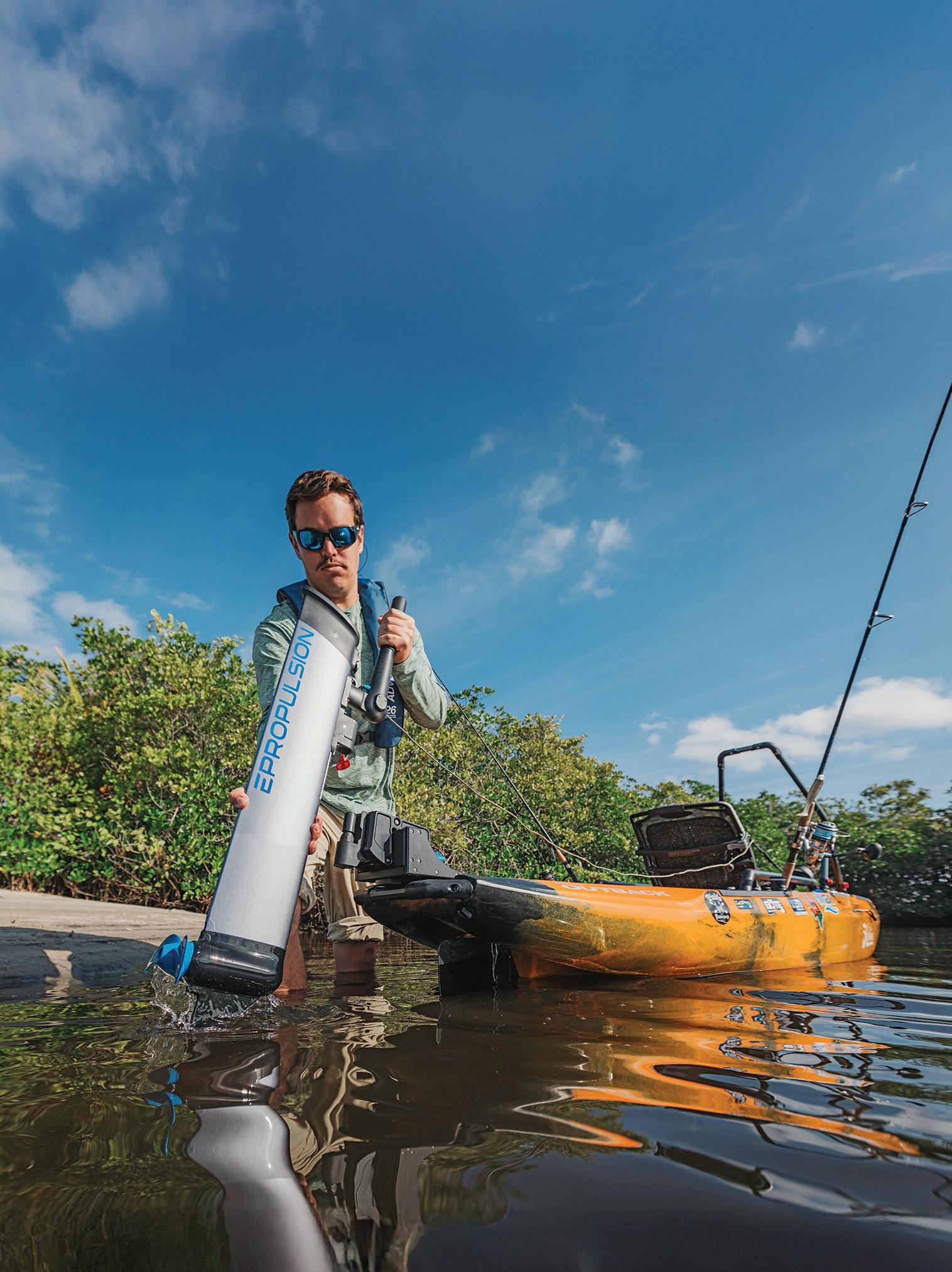
Whether you’re fishing in a kayak, canoe, or small boat, the ePropulsion eLite 500W redefines your on-water experience with innovative features and commitment to sustainability. Designed to be the most compact and lightweight electric outboard in its class, it is an easy-to-use alternative to small internal combustion engines for enthusiasts worldwide. Max 5.6 miles at half throttle and 3.5 miles at full throttle.





In general, the trend in boating these days is bigger is better. Right? Engine horsepower is getting higher and higher, and boats are being built able to accommodate two, four, even six engines. But what about the other end of the spectrum – anglers and cruisers that are looking for the ultimate in portable propulsion? Whether you are looking for a boost for your kayak or a reliable motor for your inflatable fishing boat or tender, the perfect engine should be lightweight, easy to take on and off, easy to use and provide the range and speed for almost any conditions. It should be self-contained, so you don’t have to deal with lugging around a fuel tank, or even have to purchase and safely store gasoline on your boat. Electric propulsion is the way to go, but no one has really gotten the right combination of affordability, reliability and power – until now.
range raises the bar in electric boating standards.
Designed to be the most compact and lightweight electric outboard in its class, the ePropulsion eLite 500W electric outboard is
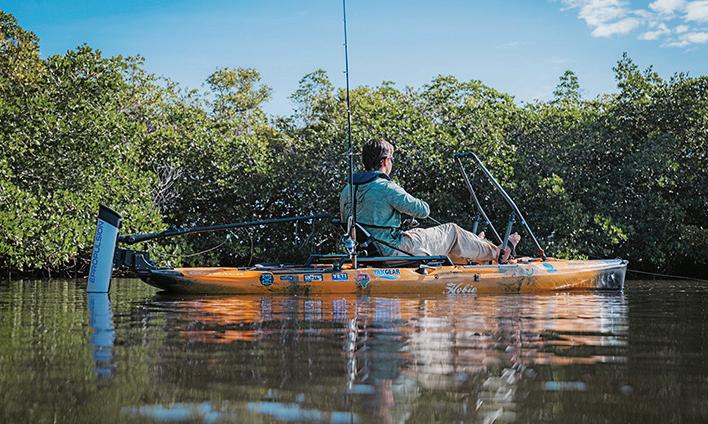
The ePropulsion eLite, which has been created for the tender and smaller boating market, represents a new era in clean, quiet, and eco-friendly marine propulsion. The direct-drive motor and advanced propeller design delivers high efficiency with near-silent operation, especially attractive for anglers, as it is less likely to scare away fish. With a focus on minimal maintenance and cutting-edge technology, this addition to the ePropulsion
an easy-to-use carbon-free solution for small engine application. Its Sport mode adds an additional 50% boost in power for challenging conditions bringing the top speed to over five miles per hour. With multiple charging options, including 110/220V AC, 12V DC and solar with the use of optional ePropulsion converters, the eLite can be fully charged in around four hours. For added capability and convenience, the engine includes a USB-C output that allows users to charge and power other electrical devices.
At just under three-feet in length and
weighing 14.7-pounds including the built-in battery, the eLite stores easily and the one-click quick-release bracket allows for installation and removal in a matter of seconds. For exceptional portability, the tiller handle converts to a perfectly balanced carry handle. With multiple trim and tilt angles, adjustable steering resistance and shaft length, and a shallowwater mode, the eLite is completely customizable. Its Smart Battery Monitoring System efficiently optimizes performance, carefully regulating battery level, temperature, and remaining state-of-charge all displayed on an ultra-simple interface, leading to extended range, a more energy-efficient operation and longer battery life. Built to last, it is IP67 waterproof, and is constructed of aviationgrade aluminum alloy for lighter weight and greater durability. In addition, the anti-ground auto kick-up feature protects the motor from accidental damage. Available for under $1,000, it is also the most affordable electric outboard in its class.
There’s no time like today to upgrade to the electric outboard of the future. The ePropulsion eLite is in stock and ready to take you quietly and sustainably to your next adventure.

By A. deGruchy
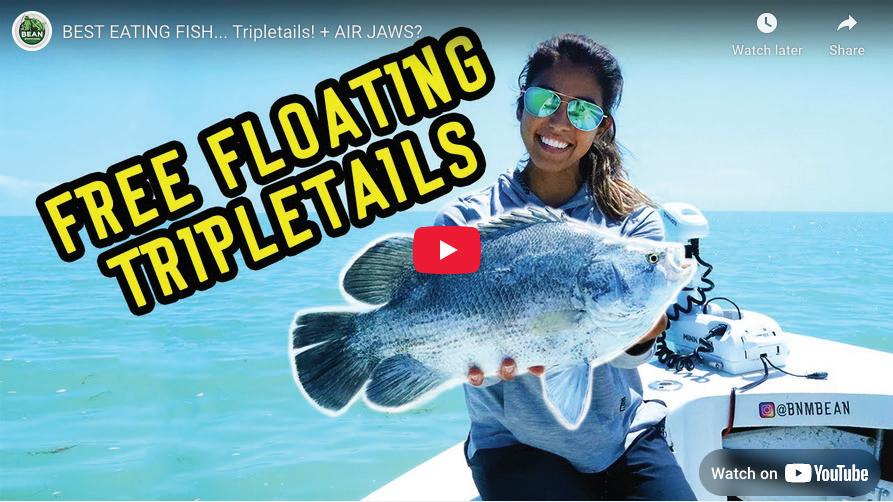
Late spring through summer marks the prime season for tripletail fishing in the Florida Keys. Known for their unique appearance and strong fight, these fish are a favorite for anglers looking to challenge their skills. Tripletail are opportunistic feeders, often lurking around floating structures like buoys, weed lines, or even debris in the water, so learning how to spot them and presenting the right bait are key to a successful catch.
When targeting tripletail, it’s important to have the right gear for the job. A 7’ to 7’6” medium rod with a fast action will


provide the strength and responsiveness needed to manage their powerful runs. Pair this with a 3000–4000 size reel. We rely on the PENN Battalion paired with the 3500 PENN Authority as our personal set up. For leaders, a 20 lb. fluorocarbon leader is good, along with a 3/0 circle hook. We trust the Mustad UltraPoint hooks for their sharpness and strength. For bait, shrimp or small white bait are both top choices. Finding tripletail requires enough daylight and minimal clouds for visibility. They prefer floating structures such as buoys or patches of floating seaweed, so keep an eye out for these areas while cruising the waters. A key factor in casting is to land as light as possible near the fish, allowing the bait to drift naturally with the current. Tripletail are often slow movers, so be swift and avoid sudden movements that might scare them off. A light and steady retrieve will give your bait the best chance of getting tight.
Tripletail fishing in the Florida Keys can be incredibly rewarding, especially when you hook into one of these feisty fighters. They also make excellent table fare if you wanted to catch and cook, getting the full sea-to-table experience.
Book your adventure now at www.beansportfishing.com as our trips fill up fast!
Follow deGruchy’s adventures at @bean_sportfishing on Instagram and YouTube.


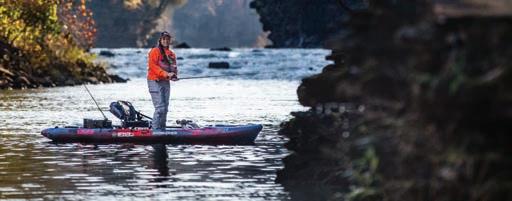

When it comes to freshwater fishing, Tennessee has an embarrassment of riches. From massive rivers and reservoirs to small ponds and high-elevation trout streams, the state is home to incredible fishing opportunities. Tennessee State Parks are excellent base camps for on-the-water adventures. They offer amenities for lodging or camping, and many of them are right on the water, with unparalleled access to some of the best fisheries in the nation.
Here are a few great Tennessee State Park fishing destinations:
• ROAN MOUNTAIN STATE PARK: Fed from elevations of around 6,000 feet, the Doe River runs clear and cold through the center of Roan Mountain State Park. Its tributaries are home to healthy year-round populations of native brook trout and both wild and stocked rainbows and browns.
The 2,000-acre park is dominated by hardwood forests and rugged ridgelines. It is a beautiful place to be, whether you’re casting flies or just camping and going for a hike.
• HARRISON BAY STATE PARK: Just outside of Chattanooga, Harrison Bay is a 1,200-acre park with 40 miles of shoreline on Chickamauga Lake. If you’re a bass angler, you know “The Chick’s” reputation as a big-bass factory. It is ranked among the best largemouth fisheries in the world.
The massive reservoir is also a great fishery for smallmouth bass, striped bass, crappie, walleye and big Tennessee River catfish.
• ROCK ISLAND STATE PARK: North of McMinnville, Rock Island is an 883-acre state park on the headwaters of Center Hill Lake, where the Caney Fork, Collins and Rocky rivers meet. These rivers and the lake itself are some of the best fisheries in this part of the world for “The Fish of 10,000 casts.” If the mighty muskellunge is on your hit list, this is a good place to chase one.
The park is also a fantastic place to catch walleye when the rivers fill up with spawning walleye in early spring. There’s plenty of bank space to fish from, and it’s a great area for kayaks, canoes and boats.
• NORRIS DAM STATE PARK: A short drive from Knoxville, Norris Dam State Park is 4,000 acres on Norris Lake. The lake is renowned for excellent smallmouth bass fishing as well as good fishing for largemouth bass, catfish, striped bass and walleye.
If that isn’t enough get you excited, the Clinch River downstream of Norris Dam is one of the best tailwater trout fisheries in the Southeast.
These four Tennessee State Parks are just the tip of the iceberg. With fishing as a primary draw to more than 40 state parks in the volunteer state, you’ll need to do some research to plan your next adventure. For information, visit tnstateparks.com.





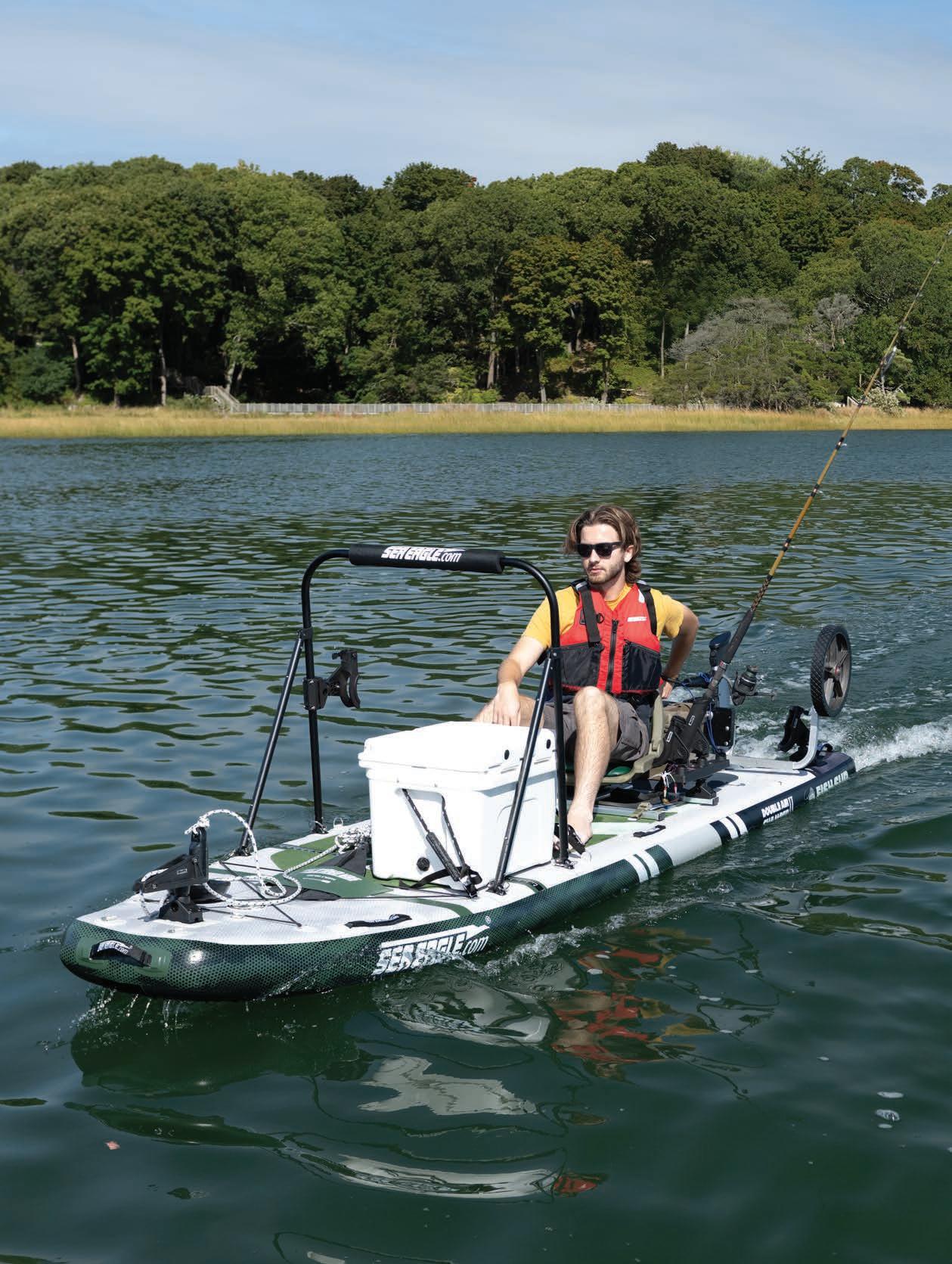

With its unique blend of performance, stability, and practicality, the FS1210 is an excellent choice for those looking to fish in a variety of water conditions. Measuring 12 feet 10 inches in length, this inflatable SUP provides ample space for gear, comfort, and movement, making it ideal for anglers who want to fish from a paddleboard.
The super stable, super portable, and super versatile 12’10” long x 40” wide inflatable SUP has two air chambers for safety. Throw it in your trunk and take it with you wherever you go; the FishSUP inflates in 8 minutes so you’ll be on the water in no time. Dress it to the nines with optional side pontoons, swivel seat, casting bar, bow motor, and stern motor. Or take it easy and go no frills with just you, the board, a paddle, and your fishing gear. The options are almost endless.

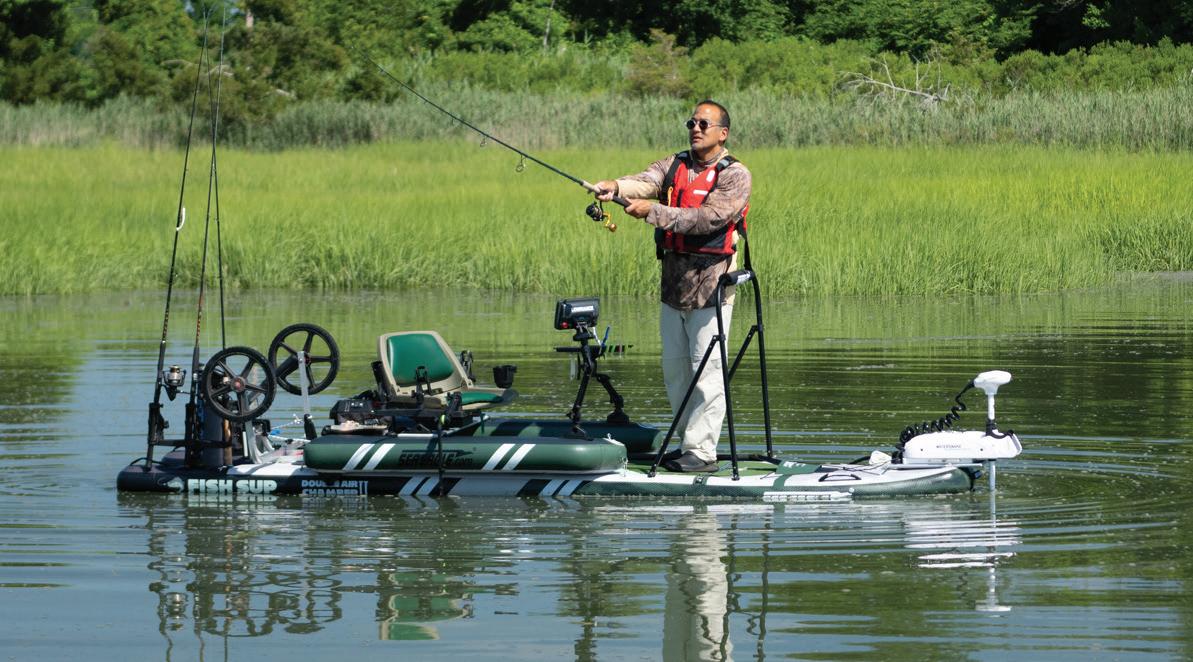
The FishSUP with features anglers love. A built-in 36” fish ruler makes it quick & easy to measure your fish. A detachable motor mount that can take up to a 3 hp gas motor or be used with an electric motor also allows you to attach Landing Gear Wheels. The wheels snap in place so you can comfortably roll your they won’t take up space and you won’t need
to run back to your car because they can be flipped up & out of the way when you’re at the water. There are bow motor mount attachment points, multiple d-rings, a non-slip EVA foam deck pad, 7 grab handles including a center handle for easy 1-handed
carrying, and much more.
The Sea Eagle FishSUP™ 1210 offers anglers an unmatched combination of stability, durability, portability, and comfort, making it the best choice for those seeking an all-in-one fishing platform that can be used on any waterway.


By Riley Love

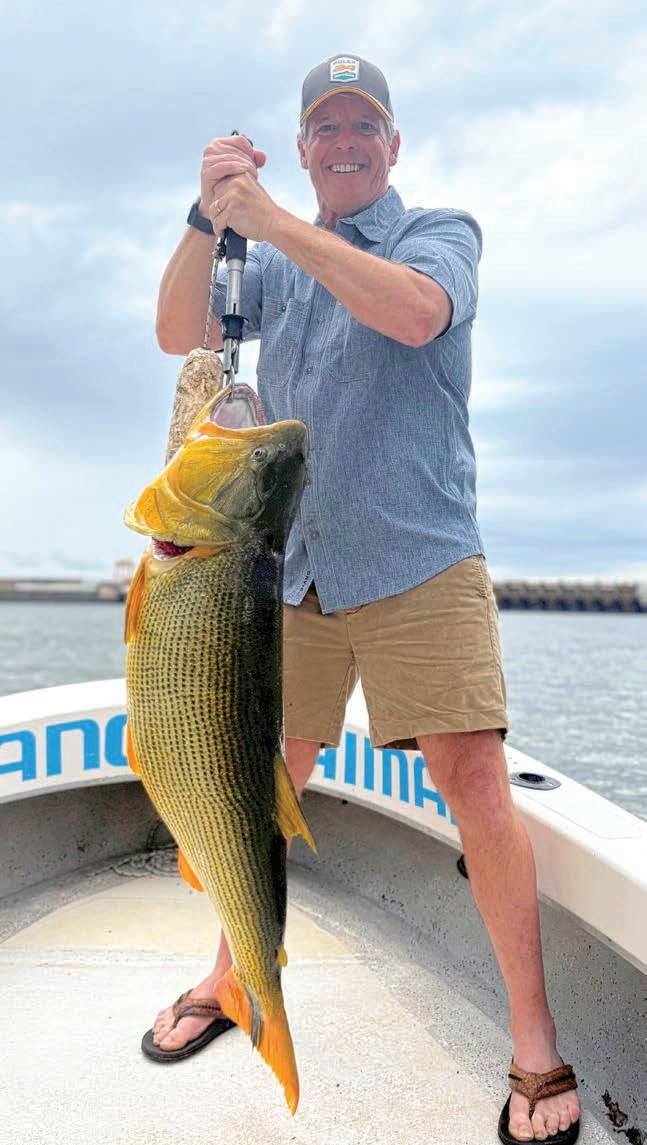


nly in the dreams of fishermen does this occur. A wondrous gamefish pursued across five countries not only awaits but the biggest, baddest, best of them lay for you in a single place.
The Salminus Brasiliensis is certainly not related to salmon, but is of the order Characiformes which includes many species—notably vampire-fanged payara and modern cinema star piranha in South America and tigerfish in Africa. Redundantly named the golden dorado (dorado means “golden” in Spanish), it’s immensely powerful, acrobatic—and magnificently beautiful.
The Rio Uruguay (indigenous Guarani interpretation “bird river”), with the northern border of Argentina and southern of Uruguay, sports a massive hydroelectric dam, the “El Salto Grande.” Stunned eels and baitfish flow through the locks in highly oxygenated water to the waiting predators. Permits are required by the dual operators on the Argentinian and Uruguay sides of the river to fish within 1,000 meters from the dam. Fishing is rigidly structured into slots of three hours quartered per weekdays per group of two or three anglers in two boats in this “Zona.” The Argentinians lost their permits recently and our two craft had the entire area to ourselves. Downstream, twenty other boats floated outside the zone a kilometer away, prohibited

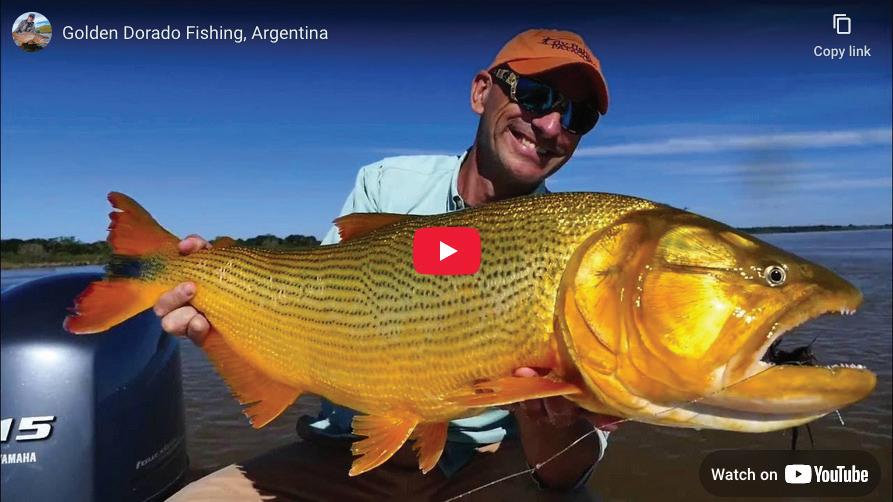
from approaching nearer. My inner voice asked, “How often does this happen to me?”
There are a lot of places to fish for golden dorado in Argentina, Bolivia, Paraguay, Uruguay and Brazil. One would note that the world record is a bit cloudy; there is a 70 lb. specimen claimed in 1970 but without a verification or a photo. To reflect on the quality of this fishery, the current IGFA record is just over 55 lbs. and taken at La Zona. Our group landed numerous fish into the mid-40 lb. range, within 80% of the documented record. In contrast, the renowned, luxurious golden dorado destination, Pira Lodge, gets about one fish over 30 lbs. annually.
Fly fishermen do well here. Locals target carp-like boga both for live bait and food. Using large topwater poppers, Rapala style diving minnows and handmade jigs, we hit rocky structure and fast-moving torrents. The dorado were exceedingly
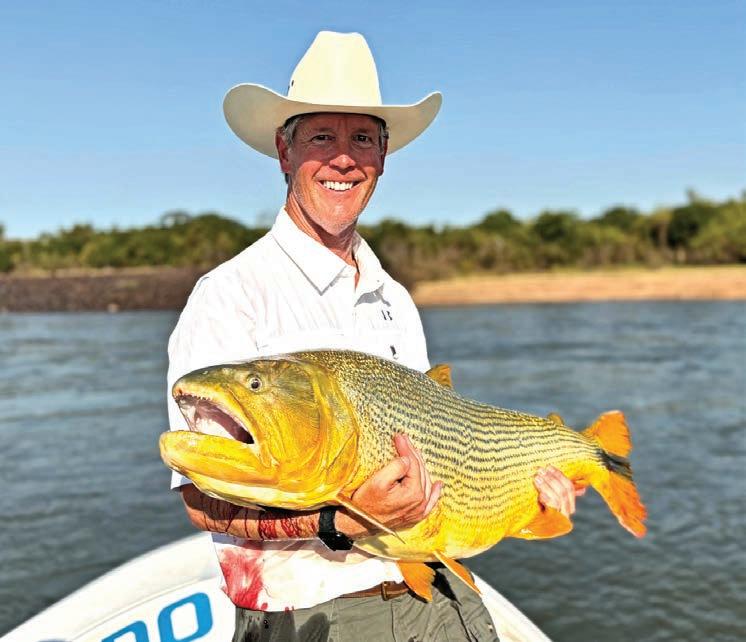
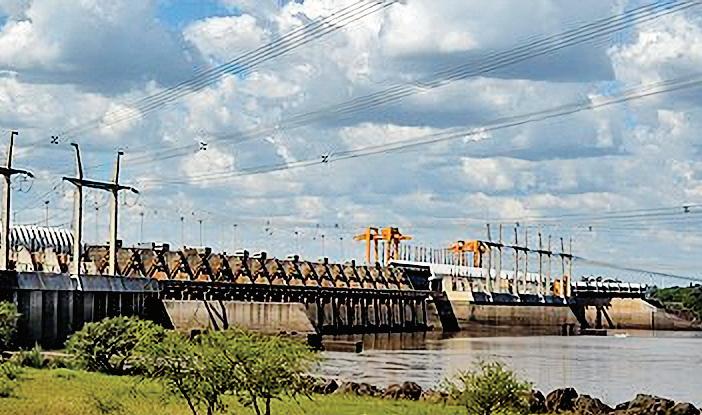

sensitive to water levels and flow being released from the dam. When it happened and their buttons were pushed, it was double digit trophies in each time slot. Multiple hookups were common.
Fishing teaches us lessons about life. Whether love, war or business, if you want success you need multiple opportunities. Even with shoulder- wrenching, reel-screaming strikes and Hank Aaron grade roundhouse hooksets, over half of what seemed like solid hookups would suddenly vanish from the transaction. It’s very much like trying to land large toothy- jawed payara. The modus operandi of these golden hulks revealed that even extra strong hooks were straightened, sometimes pulled from the lures; 65 lb. braid and wire leaders were broken. But some just “Houdinied” away, still waiting for you to come, instead of only dreaming.
Justi Campa of Fly Fishing Patagonia assisted with our planning. Reach them by emailing jcampa@flyfishingpatagonia.com or visit www. flyfishingpatagonia.com.
Riley Love is a physician and author with homes in Kentucky and Key Largo, Fla. He has penned dozens of articles on international sport fishing and a host of screenplays. He is a member of the International Game Fish Association, The Billfish Foundation and the Outdoor Writers Association of America. Contact him at 270-816-4423, rjhclove@gmail.com or visit his website: rileylove.com.
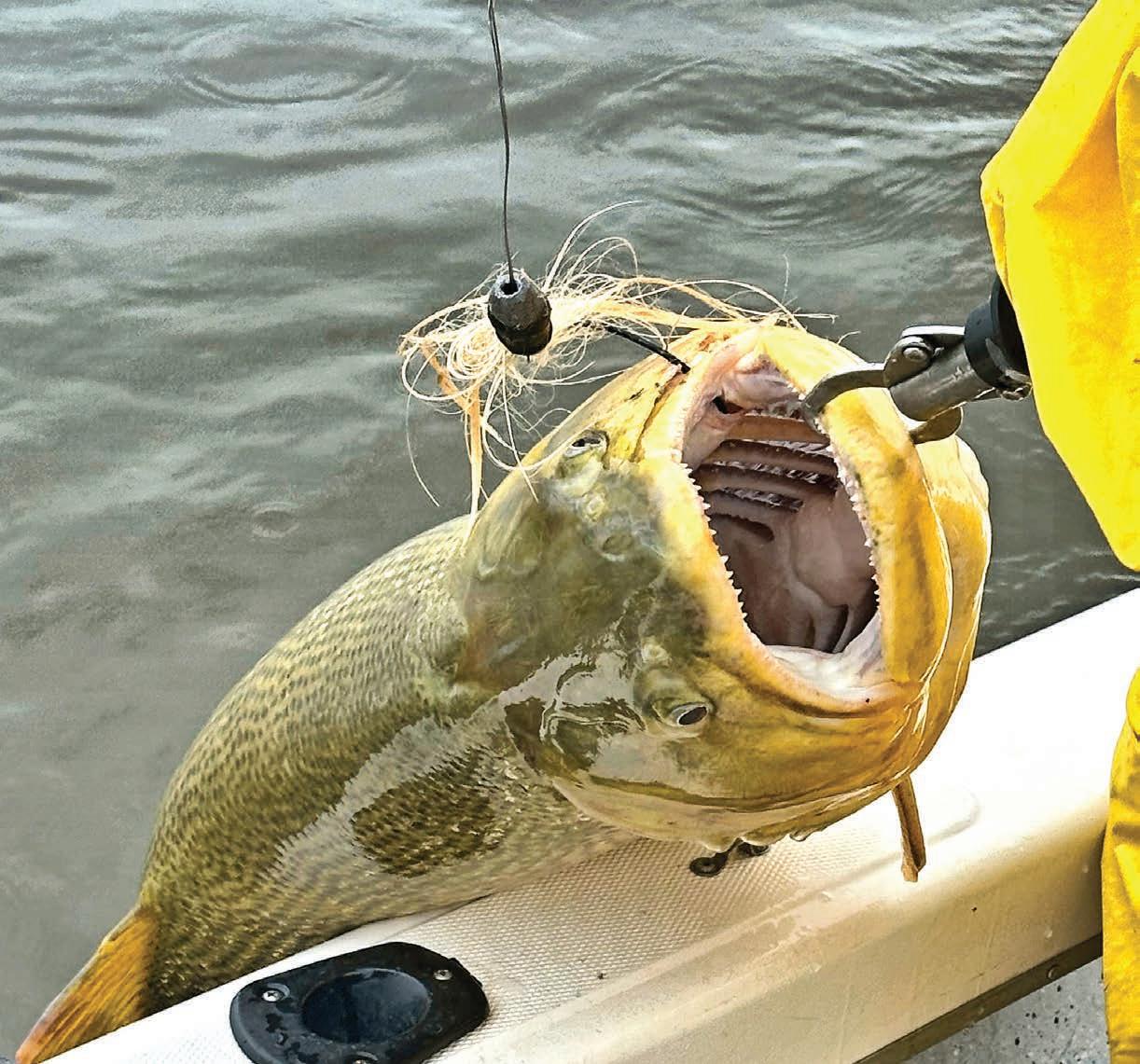
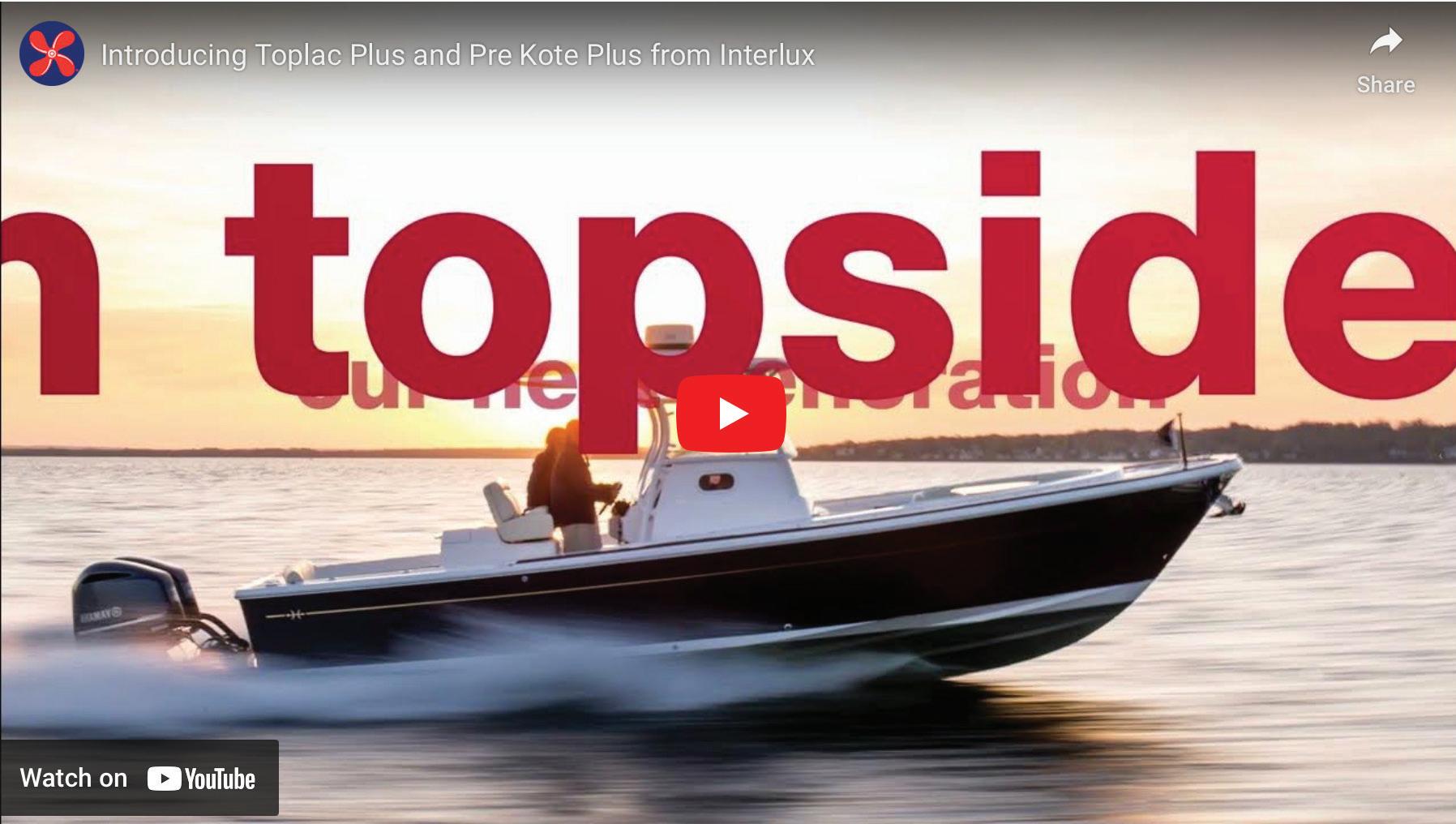
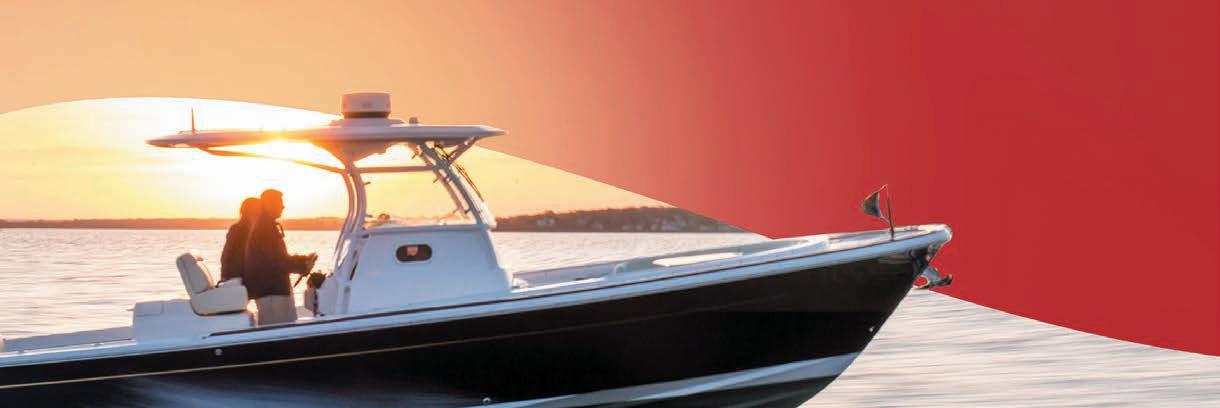


Introducing our next generation, premium topside system with professional level results in an easy to use one part finish.
Toplac ® Plus provides a best in class high gloss finish with longer lasting UV protection that is easy to apply with exceptional roller application, without the need for tipping, available in a full range of vibrant colors. Apply over Pre Kote ® Plus, our improved one part undercoat and topside primer all in one, with substrate protection, an extra smooth finish, and lower VOCs. An amazing finish has never been so easy. Experience a revolution in topside paints, from Interlux®. Relentless performance for every boat, everywhere, every time.

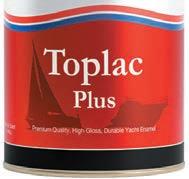
interlux.com



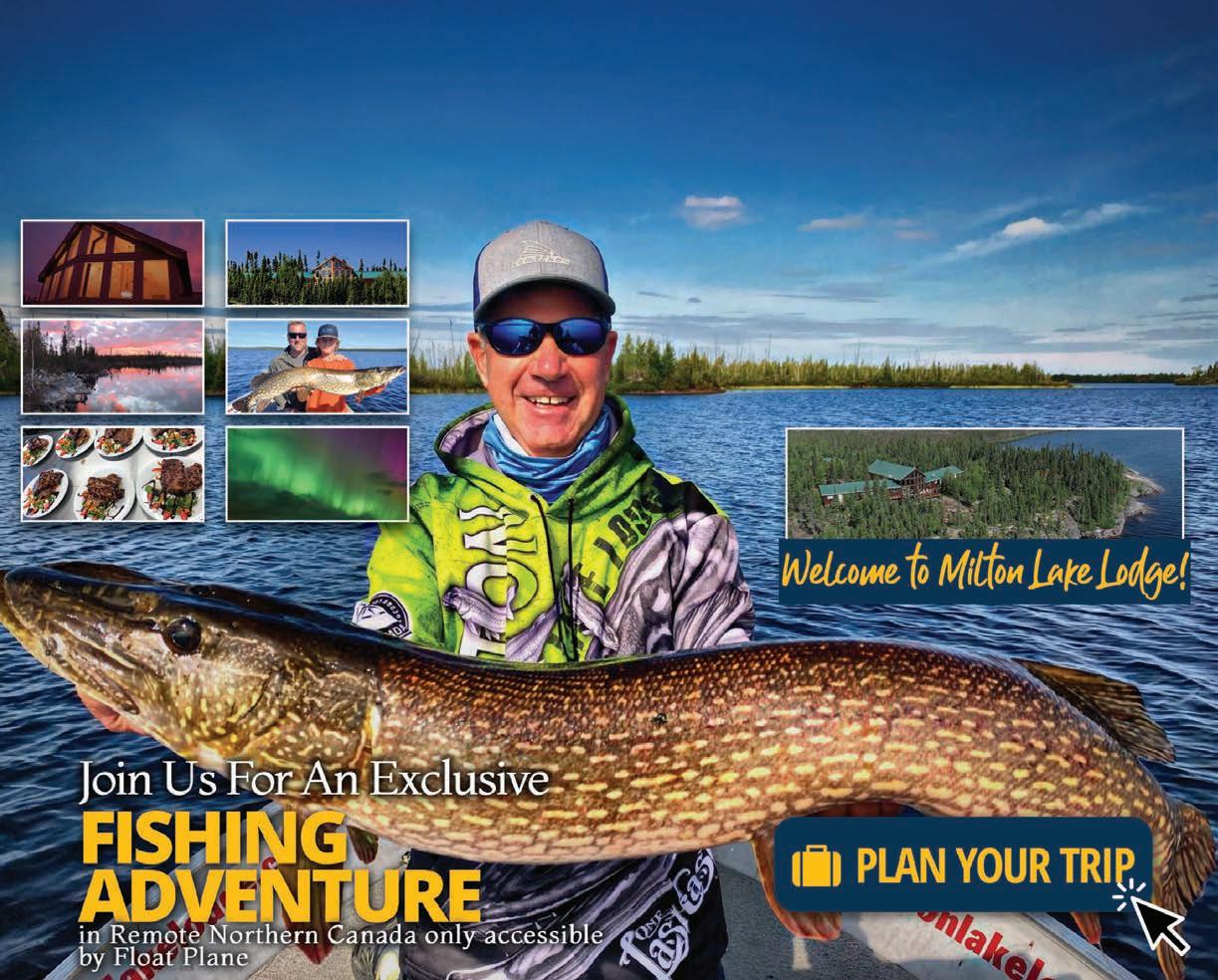




The International Game Fish Association (IGFA) has long been a global leader in promoting ethical angling practices, game fish conservation, and angler education. One of its most accessible resources is the Intro to Fishing course, a structured educational program developed by the IGFA to provide a comprehensive introduction to recreational fishing in an online setting. This engaging and interactive course is accessible to anyone with an internet connection and equips participants with basic skills, fostering a deep appreciation for the sport. Targeted at youth, families, and beginner anglers, the course covers various aspects of fishing, including:
• The Fish: Understanding what a fish is and how to identify various game fish
• The Habitat: Learn where fish live and different aquatic environments
• The Basics: Learning various fishing techniques from basic tackle to casting methods
• The Ethical Angler: Emphasizing responsible fishing practices, catch-and-release techniques, and habitat protection
• The IGFA: Introducing students to the IGFA
The IGFA’s Intro to Fishing course launched in 2019 as a means to offer a comprehensive curriculum covering angling basics and safety, aquatic and marine biology, fish identification, environmental stewardship and more to audiences around the world. Packed with educational presentations, how-to videos, and interactive quizzes, the course allows anglers to follow along at their own pace. To date, nearly 1,200 students have completed the course, ranging from IGFA smallfry anglers aged up to 10 years old to experienced adult anglers. Most students are from North America, specifically from 43 states across the USA, but students from 35 different countries on six continents have completed it as well. While most students who have completed the course have caught a fish before, nearly 15% of students have recorded that they have never caught a fish before taking the course, but it has helped inspire these students to get outside and go fishing.
“Being new to fishing, it sparked my interest to start to fish the most

Back in 2019, Braxston Johnson was the first child to ever complete IGFA's Intro to Fishing online training course! A milestone in the journey of IGFA's youth-angling education programs.
I can,” said Landon M., an IGFA Junior angler aged 11-16 years old from Hawaii, USA, who finished the course in 2022.
Many schools from primary to college have utilized IGFA’s Intro to Fishing online resource as part of their course curriculum as well. For more information about the course and how to participate, visit igfa.org/learning-modules/.
It’s no fish tale when you run with a John Deere. You can get everything done faster and easier, so you get more time on the water. Plus, our special offers make them the catch of the day.






ou don’t need an invitation to have fun in Upcountry South Carolina: Come kayak crys-tal blue lakes, hike to rushing waterfalls, dig into local cuisine, attend family oriented events and breathe fresh mountain air. But when you hold a South Carolina fishing license, it feels like an official ticket to enjoy the great outdoors.
Fish bite year-round in the lakes, rivers and streams of Upcountry South Carolina, which is located in the state’s northwest corner in the foothills of the Blue Ridge Mountains. Devils Fork State Park in Salem is a great place to access Lake Jocassee, which holds state records for rainbow trout, brown trout, redeye bass, smallmouth bass, spotted bass and yellow perch. Or try your luck at Lake Hartwell, at Lake Hartwell State Park in Fair Play and Sadlers Creek State Park in Anderson, three-time host of the Bassmaster Classic.
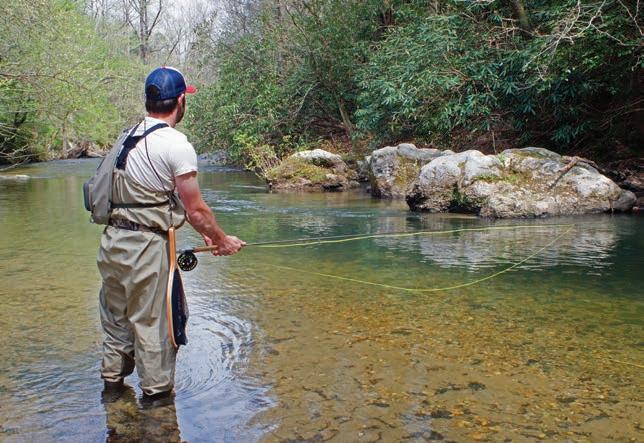

The Chattooga River boasts healthy wild trout populations and is also regularly stocked by Oconee County’s Walhalla State Fish Hatchery. The Whitewater River above Lower White-water Falls is another great option for wild trout. Lake Keowee, at Keowee-Toxaway State Park in Pickens County, swims with largemouth, smallmouth and spotted bass, crappie, bluegill, yel-low perch, catfish, brown and rainbow trout.
Pick up everything you need—including advice— at local fly shops or book a guided fish-ing trip. Sam Jones, of Jocassee Charters, puts anglers on trophy trout. Buster Green’s Guide Ser-vice reels in stripers, hybrids and bass on Hartwell and Keowee. Chattooga
River Fly Shop leads fly fishing trips on the Chattooga and Chauga rivers.
Even if you don’t fish, you can still get on the water. Jocassee Lake Tours offers tours of the lake and of Jocassee Gorges, which National Geographic called a “destination of a Lifetime.” Some amazing spots can only be reached by boat. Several tours are offered, so you can learn from a naturalist while riding on a pontoon or paddle a kayak through coves and under waterfalls.
Prefer to captain your own boat? There are several rental companies, including Tri-County Boat Rental, on Keowee, Jocassee, Hartwell and other lakes.
If you’d rather be under the water, Jocassee is a world-renowned freshwater diving desti-nation that boasts visibility of more than 50 feet at depth. Lake Jocassee Dive Shop offers lessons and guided trips to see “The Wall,” where a section of mountain was blasted to build the dam, or a 40-foot swim-through wooden sailboat.
From fishing to boating, hiking to camping, biking to bird watching and more, the Up-country’s state parks are a great place to play. Dip into the swimming hole at Oconee State Park. Hike to the tops of Pinnacle and Table Rock mountains at Table Rock State Park. Explore the 13,000-acre Mountain Bridge Wilderness Area at Caesars Head State Park. Or create your own adventure at any of the Upcountry’s 13 state parks. Visit UpcountrySC.com to learn more.
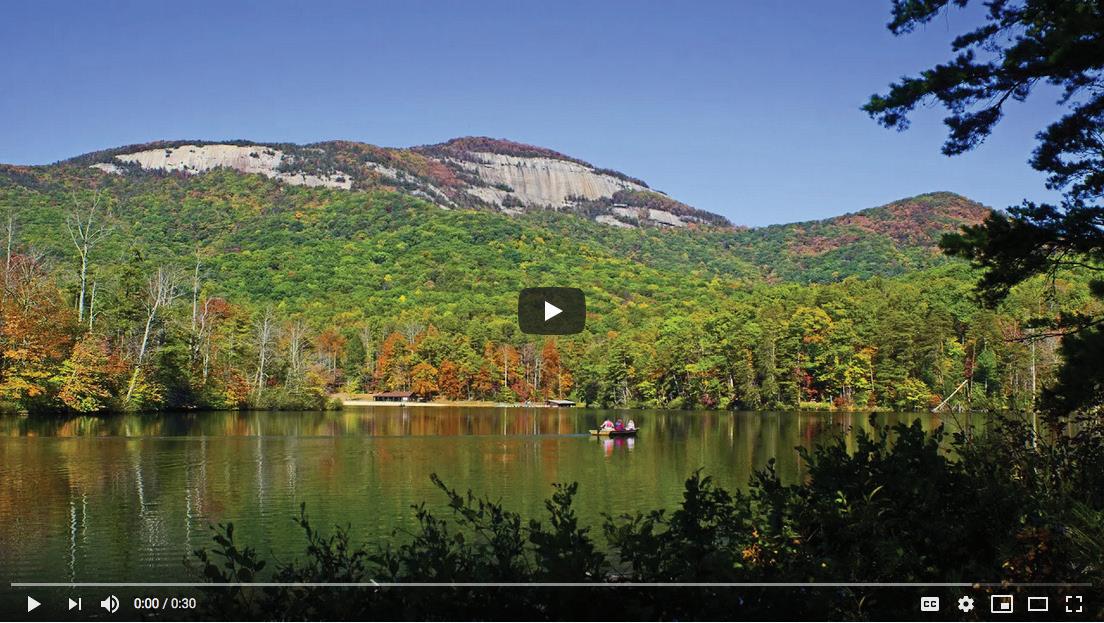







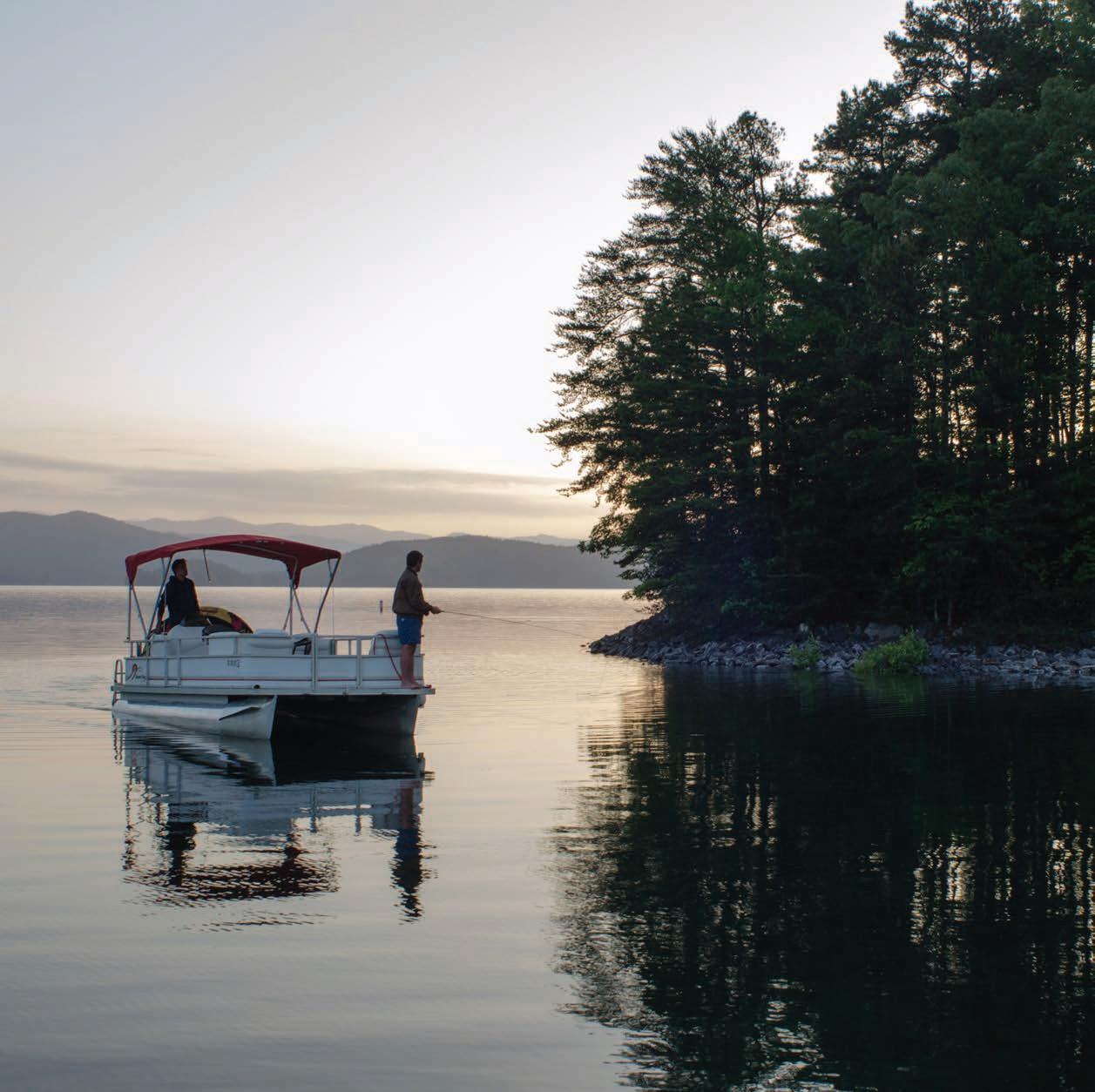


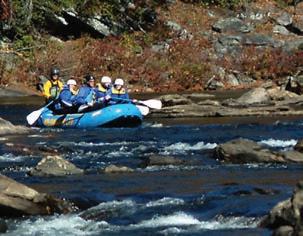
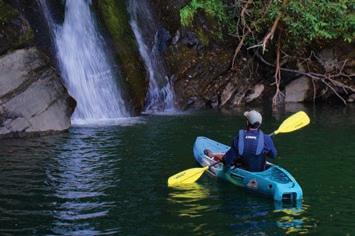
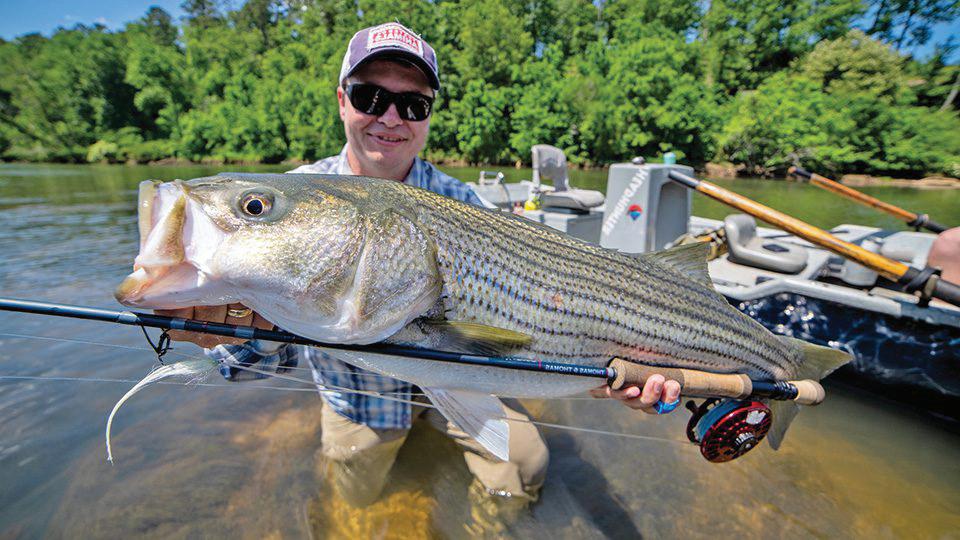
By TAM Staff
May means it’s time to rock in Weldon, North Carolina, and I don’t mean rock music. Unless of course, the sound of pulling drag coming from your fishing reel is music to your ears. Each spring, the small town of Weldon, N.C., located just off I-95 in the northeast part of the state, becomes the “Rockfish Capital of The World.” This small township is located on the fall line where
the Piedmont meets the Coastal Plain and is where these fish come by the tens of thousands each spring to spawn. Having spent the better part of the year in saltwater, they return to the freshwater of the Roanoke River in Weldon for this spring ritual.
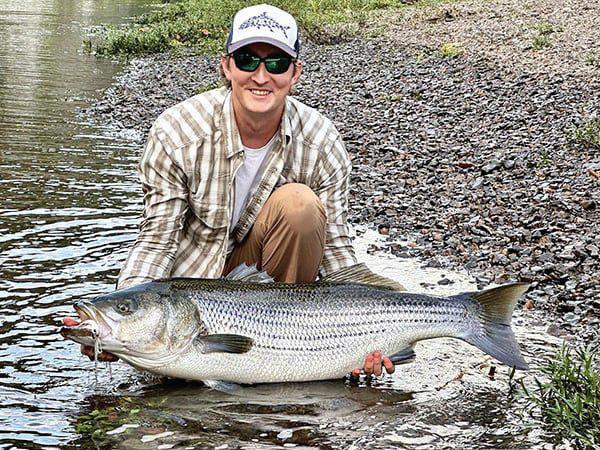
Rockfish, also know as striped bass, are known as one of the great sports fish of North America, and for good reason. A mature fish can easily top 25 pounds, and when you hook into one the fight in these fish feels like you’ve got a tiger by the tail. Stout tackle and line are a must to bring one of these fish to the boat.
To find out more about how you catch these fish, I talked to Charles Robinson of Charlie’s Striper Guide Services. Charles has been fishing the river all his life and says the fish show up in numbers in Weldon about the time the water temperature reaches approximately 68 degrees. A good visual indicator of this is when the dogwoods start to bloom. There are several ways to catch these fish; artificial Fluke baits bounced along the bottom on a ½-ounce jig head, cut bait fished on the bottom, or Charles favorite, live bait in key fish holding “holes” along the river. Apparently, a live threadfin shad is irresistible to rockfish. In Charles words, “It’s like crack to them; they just gotta have it,” and from
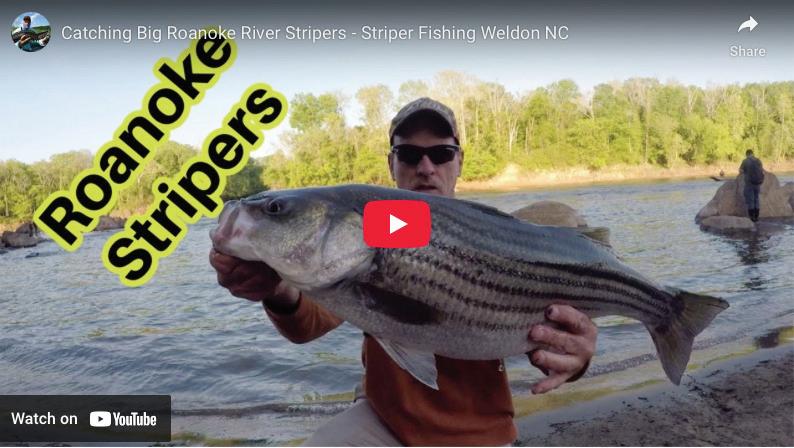
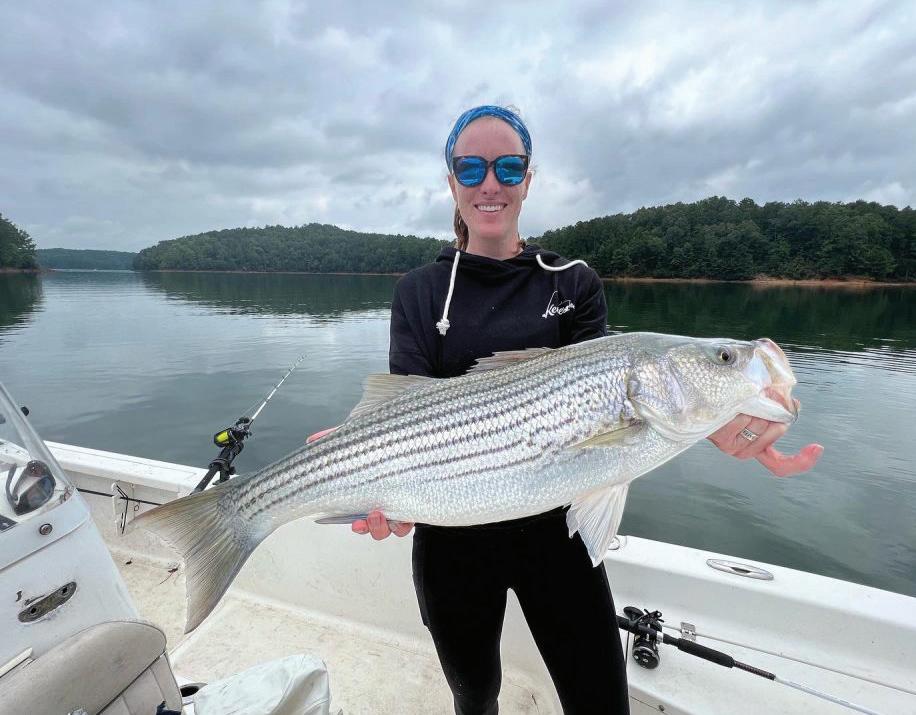
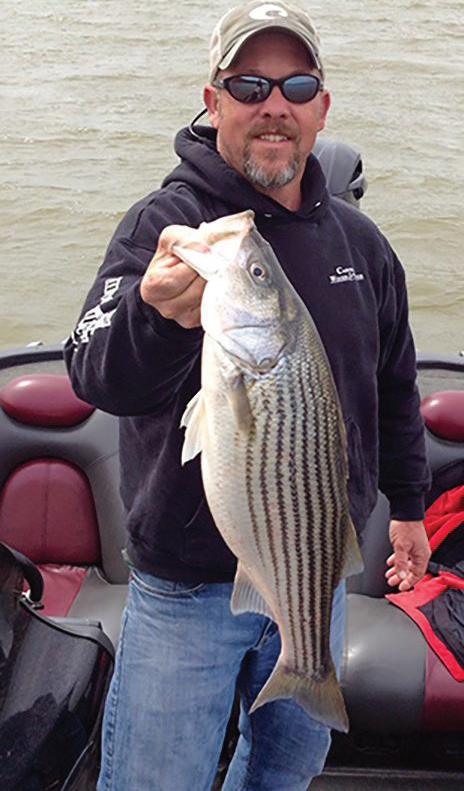
Charles’ experience, live bait results in catches of consistently bigger fish than any other method he has used.
In springtime, the Roanoke River is alive with fish. It begins in early March with the hickory shad, followed closely by the larger American shad and culminates with the rockfish run. Fishermen from around the world make the trip
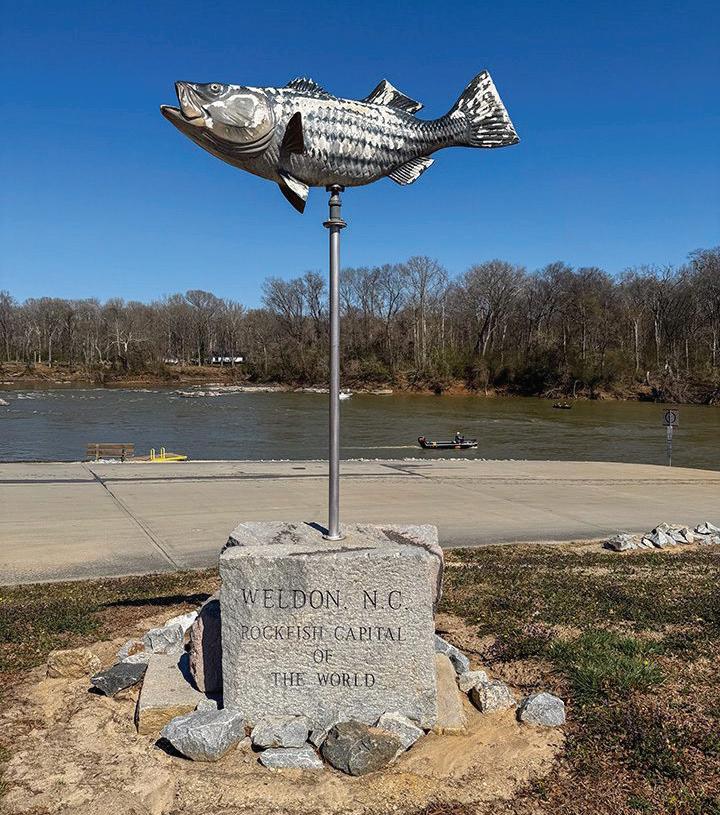
to Weldon, and it is truly one of the “Bucket List” trips you have to check off the list.
Before you go there are a few things you need to know:
A grown rockfish is not a light tackle fish. You’ll need to bring some heavier tackle if you don’t want to lose a few fish.
Striped bass is a managed fish species, and
there are size and fish limits that are strictly enforced.
Though there are is a lot of fish in the river, it’s helpful to have someone with you that knows the river if you are going to make the most of your trip. For this, I’d give Charles Robinson of Charlie’s Striper Guide Service a call at (252) 532-7634.
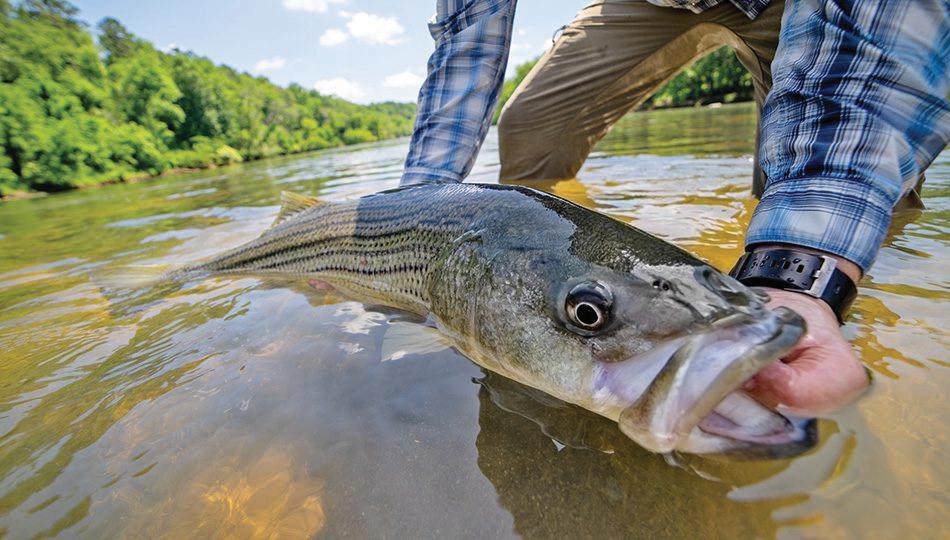
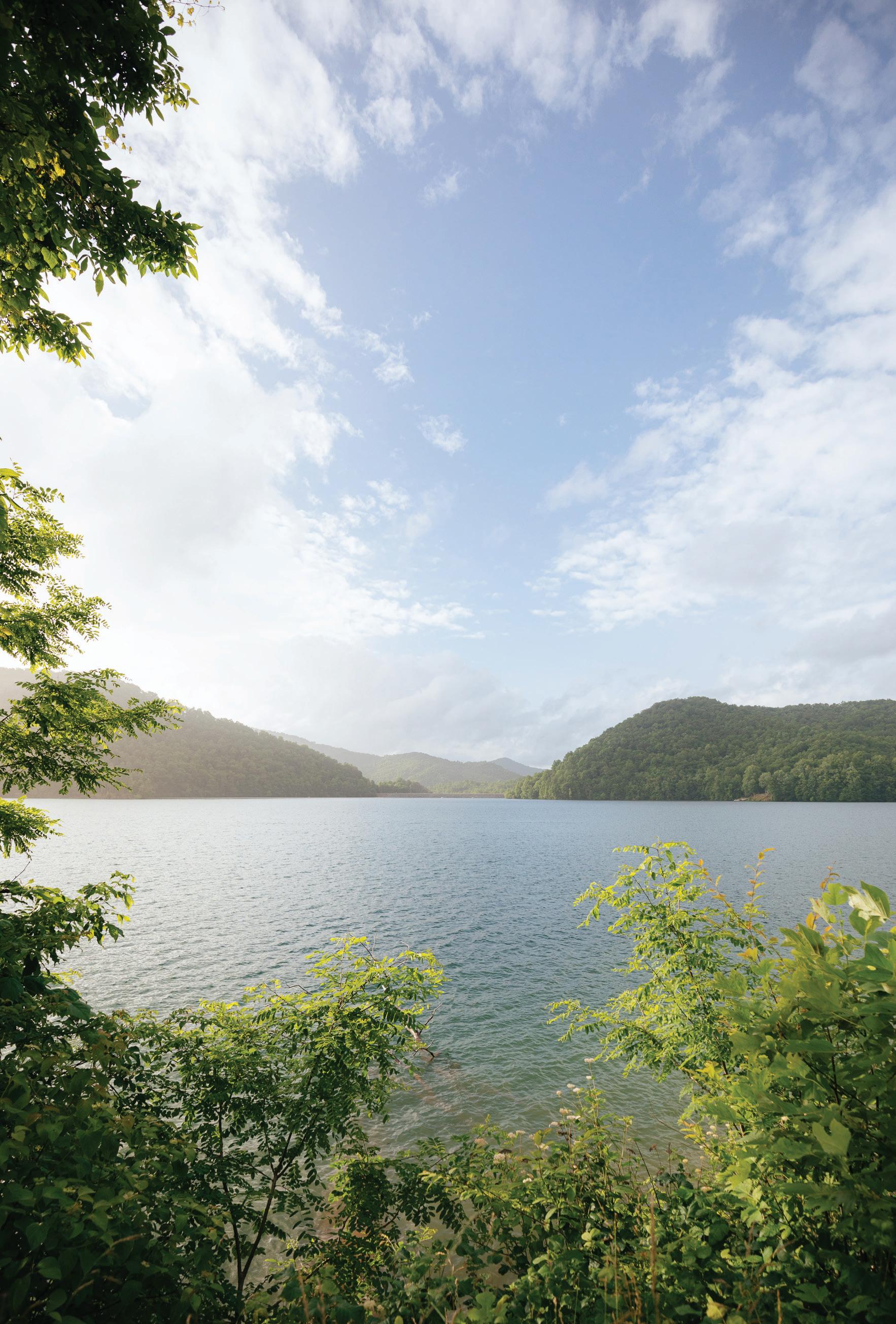

When you first drop your boat in the water, oftentimes it can be extremely overwhelming on where to fish and what to throw. One bait I have found in particular seems to catch bass at every lake I go to. This bait is a bladed jig, better known as a chatterbait. The bladed jig is a extremely versatile bait, meaning you can throw it around so many different types of cover and fish it at many varying depths. It allows you to cover a vast amount of water and locate bass that would usually take
TYLER WOOLCOTT

days to find with other baits. As you approach a new lake or even one you have been to a thousand times, it’s always a good idea to throw a confidence bait that you know will get bites. The chatterbait is mine. I’ve found that no matter the cover, grass, trees, docks, riprap, etc., it gets bit. With the blade on the front vibrating so erratically, it allows this bait to come through cover extremely well and creates


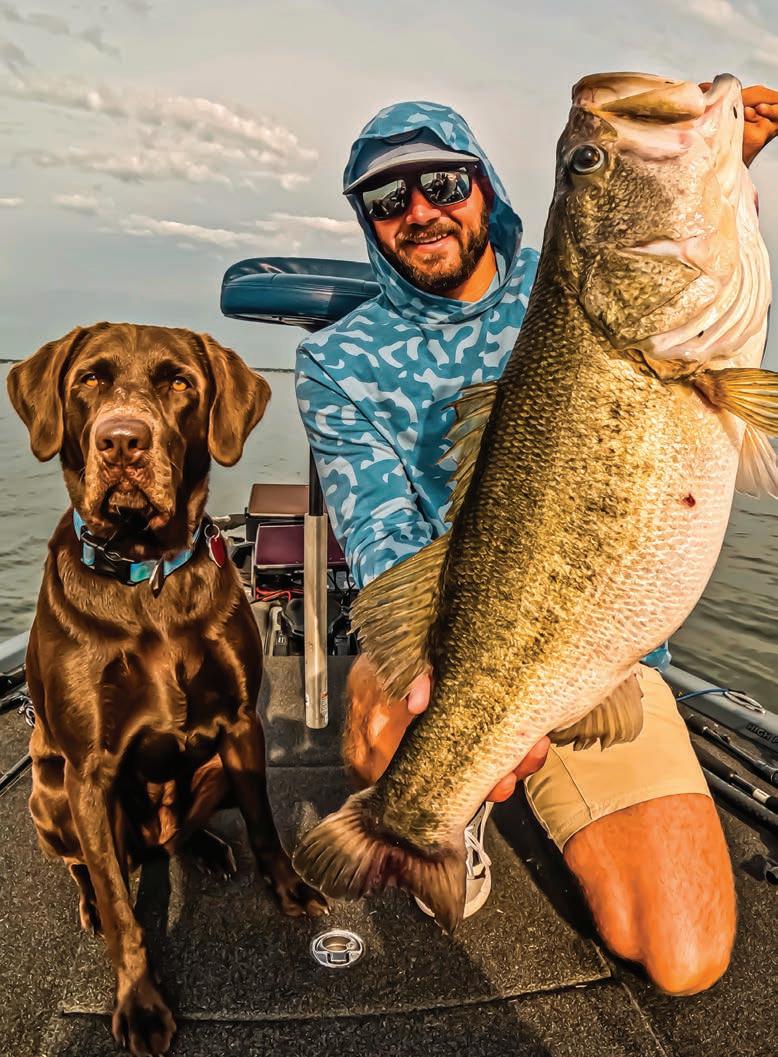

a reaction strike no other bait can. Let’s talk about matching the chatterbait to the bait forage. By matching the color of the bladed jig to the forage in the lake, a bass can’t resist it as a nice snack when you reel it through their home. Depending on the time of year and what kind of bait the bass are feeding on where you are fishing, there is a color made to match the hatch. If shad is the prevalent forage, I like to stick to a white or a baitfish color like a pearl and silver with a silver colored blade. If it’s bluegill, you can get by with a green pumpkin or anything with some yellow and orange mixed in with a darker blade color. Sometimes water color can play a factor in color choice as well. If the water is very dirty, you will have to use a color that will stick out so that they can see it pass by. Something like a white and chartreuse with a white blade (for baitfish imitation) or even a bright orange with a black blade (for crawfish imitation) can do the trick.
Sizes and weights of your bladed jig are extremely important. With sizes ranging from 1/4 oz. all the way to 1.25 oz., the depth you are fishing will decide what you tie on. I typically start with a 3/8 oz. or a 1/2 oz. which will allow you to cover water depths from 1 to 10 feet depending on your retrieve. If I find some deeper cover that i want to get down to and fish, I will go a little heavier to a 3/4 oz.
Buying a bladed jig and tying it directly on your rod usually isn’t too effective without putting a trailer on the back of it. I like to try and match the color of the trailer to the color of the skirt on your chatterbait of choice to get the most natural look for the fish. The type of trailer can be a bit more complicated. I use either a swimbait style trailer with a boot tail or a flapping style trailer like a craw pattern. The boot tail stands out when fish are very aggressive and aren’t scared of the more aggressive action the boot tail causes behind the bait. The flappy trailer is better for highly-pressured fish that want a little more of a subtle approach who might not like the amount of action a swimbait trailer has.
A chatterbait is a very dominant bait all across the country and I rely on this bait at all times of the year to help me put fish in the boat. Next time you hit the lake, give the chatter-baitt a try and cover some water!
BLADED JIG GEAR: When throwing a bladed jig its important to have the correct gear. I use a 13 Fishing Myth Rod 7’5 MHmod paired with a 13 Fishing Concept A 7:5:1 reel. I spool this up with 17 lb. Sufix Advance Fluorocarbon line making this the perfect combo for the job.
Tyler Woolcott is a professional tournament angler and guide. Check out his website at www.tylerwoolcottfishing.com.
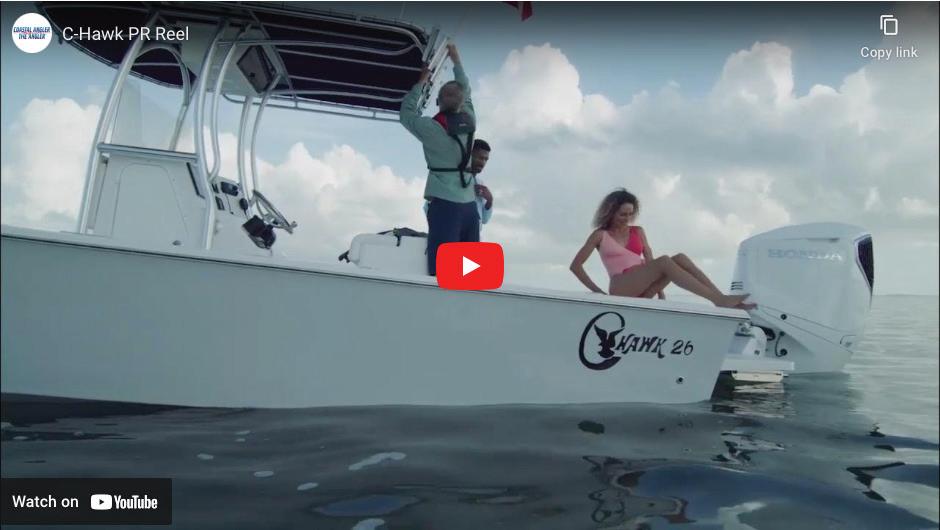
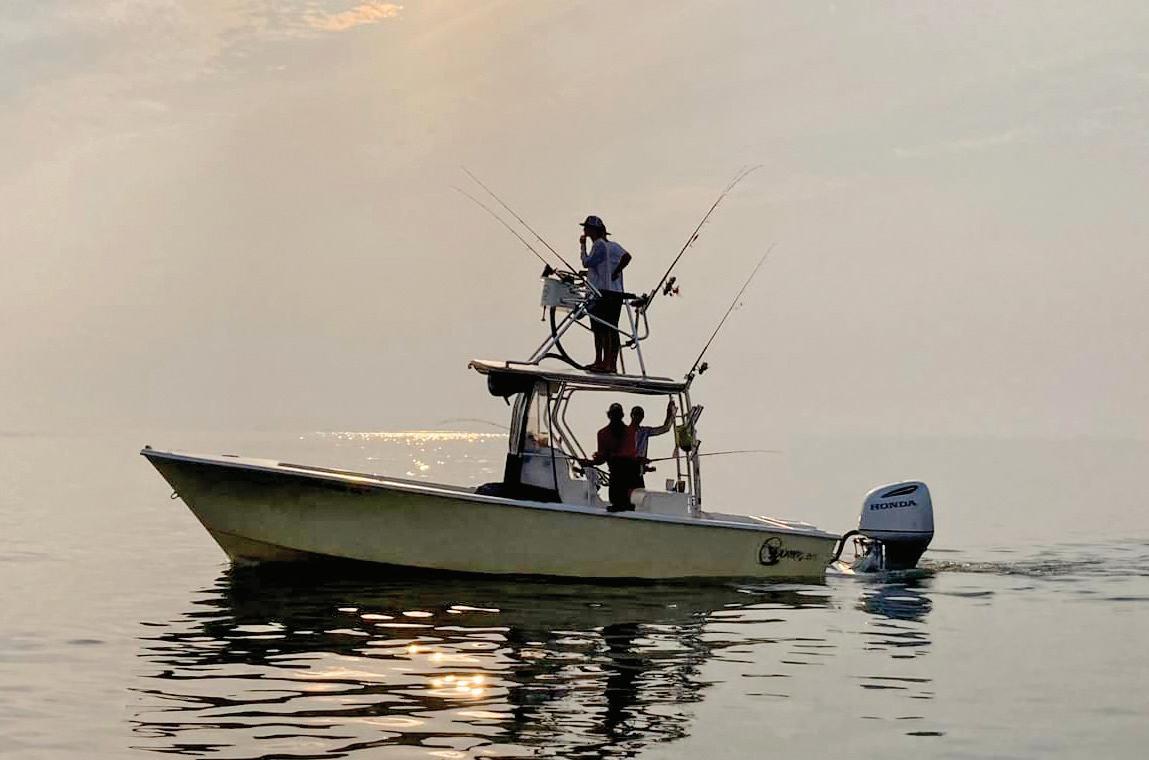
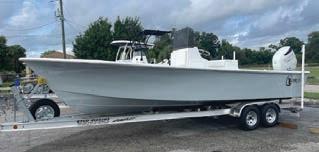
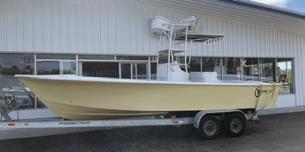
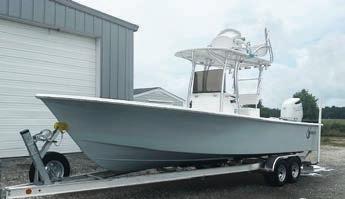




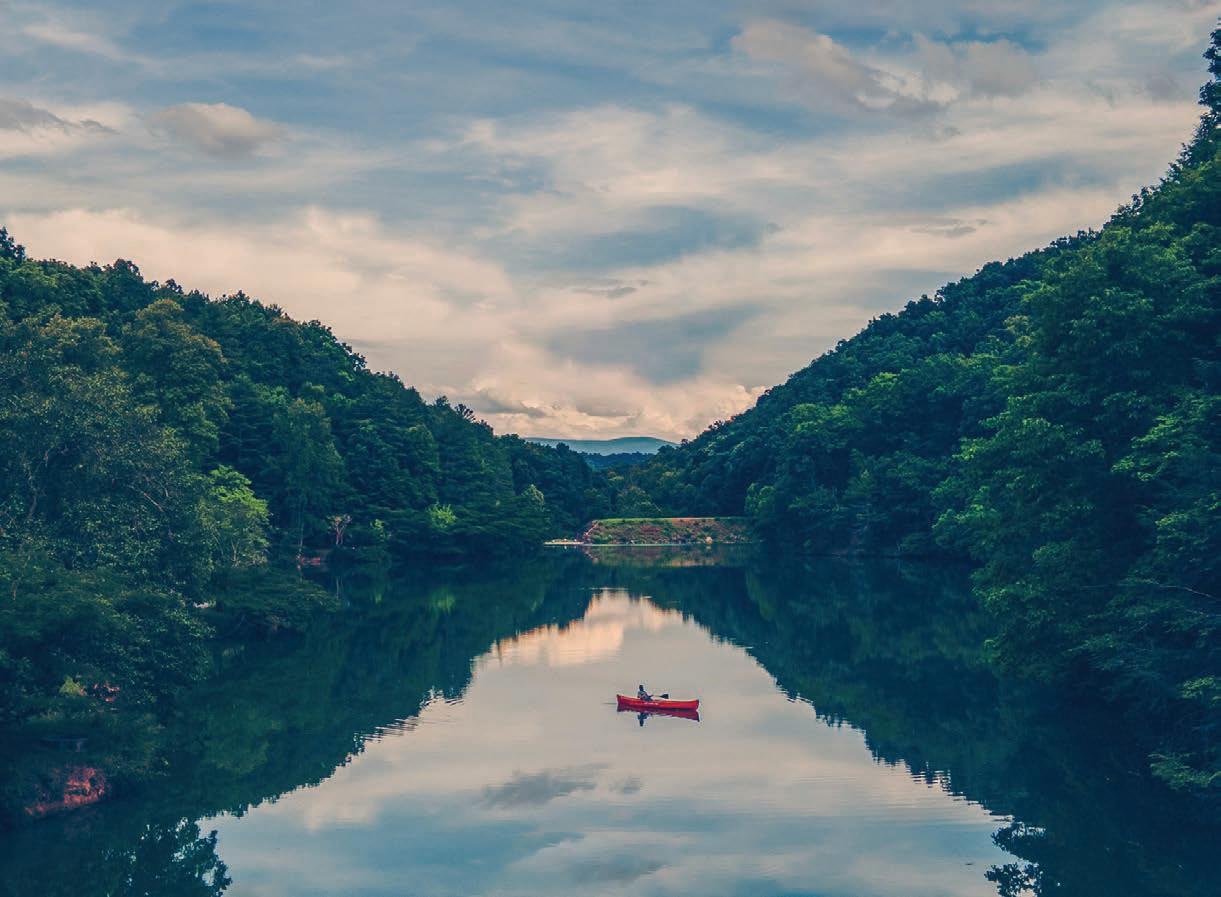



Welcome to Explore Bristol, where the charm of the Appalachian Mountains meets the vibrant culture of twin cities Bristol, Tennessee, and Bristol, Virginia. Whether you’re a thrill-seeker, a history buff, or a nature enthusiast, Bristol has something for everyone.
HISTORIC DOWNTOWN
BRISTOL:
Stroll through the vibrant heart of Bristol, where friendly locals welcome visitors with open arms. Explore locally-owned restaurants, shops, live music venues, and arts and culture1. Don’t miss the iconic Bristol sign, a symbol of the twin cities’ unique heritage.
THE PINNACLE:

Shop, dine, and play at The Pinnacle, the region’s premier lifestyle shopping destination. With national retailers, a variety of eateries, and unique entertainment options, it’s a must-visit spot.
BRISTOL MOTOR SPEEDWAY:
Known as the “Last Great Colosseum,” Bristol Motor Speedway is one of NASCAR’s most popular race tracks. Experience the adrenaline rush of high-speed races in the world’s fastest half-mile track.
BIRTHPLACE OF COUNTRY MUSIC MUSEUM:
Dive into Bristol’s rich musical roots at the Birthplace of Country Music Museum. Learn about the 1927 Bristol Sessions, which gave birth to a new sound and sparked a passion for Americana roots music.
HARD ROCK HOTEL & CASINO BRISTOL:
Enjoy live music, world-class gaming, and exceptional cuisine at the all-new Hard Rock
Hotel & Casino Bristol. With multiple suite offerings, a large gaming facility, and a great selection of bars and restaurants, it’s the ultimate entertainment destination.
THE GREAT OUTDOORS:
Explore the stunning scenery of South Holston Lake, Steele Creek Park, and Bristol Caverns. Enjoy fly fishing, hiking, and biking trails that showcase the natural beauty of the region.
LODGING:
Whether you’re traveling for business, pleasure, or an outdoor adventure, Bristol offers a variety of lodging options. From national chain hotels to boutique accommodations, you’ll find the perfect place to stay.
ExploreBristol.com provides all the information you need to plan your perfect trip, from accommodation options to special offers and events. Whether you’re looking for a romantic getaway, a family holiday, or an epic solo adventure, Bristol has it all. Start exploring today and experience the best of this dynamic city!
The National Pediatric Cancer Foundation (NPCF) created “Fishing Funds the Cure” to raise awareness and funds for crucial research. Each year, they unite corporate partners, passionate anglers, and dedicated supporters for Fishing Funds the Cure Tournaments through an activity that everyone loves. These exciting inshore and freshwater fishing tournaments are held in beautiful locations like St. Pete Beach and Sarasota, Florida, San Juan, Puerto Rico, and more. Each event, thoughtfully designed to engage supporters, features a kick-off celebration, angler swag bags, an awards dinner and a silent auction, all dedicated to making a meaningful impact.
NPCF organizes these events to blend the universal love for fishing with an important cause. Their mission is to conduct research leading to less toxic and more therapeutic treatments for children with cancer, and are committed to making a difference in a system that often neglects our children. Despite their bright futures, only 4% of government funding for cancer research supports pediatric initiatives, highlighting the urgent need for advocacy.
NPCF has made remarkable progress and is recognized as the nation’s leading solution, delivering rapid, innovative, and efficient science
through a collaborative network of 40 hospitals. Operating independently of pharmaceutical and government funding, with eight institutions noted in the “Top 20” by US News, they have invested over $40 million in translational studies and clinical trials. NPCF currently have 30 studies and 11 active trials:
• A new drug compound – which could be the 11th drug utilized to treat children
• Blood bio-marker study – which could be a prevention indicator for relapse patients
• A rare disease trial addressing “rhabdomyosarcoma”
• Multiple combined immunotherapy trials to include a potential vaccine
• NPCF has also authorized the “first-ever” education toolkit – provided to pediatric cancer families
• They are also developing treatment guidelines for relapse patients
If fishing is your passion, NPCF invites you to channel that enthusiasm toward a worthy cause. Join them at one of their tournaments, organize your own fundraising event, or take on their “43 Challenge” to honor the 43 children diagnosed

with cancer every day. You can easily start by using NPCF’s online fundraising tool, challenging 43 friends to fish, and encouraging them to donate $43.
The National Pediatric Cancer Foundation is proud to be a top-rated charity, with 89% of every dollar donated directly supporting research. To learn more, visit NationalPCF.org.














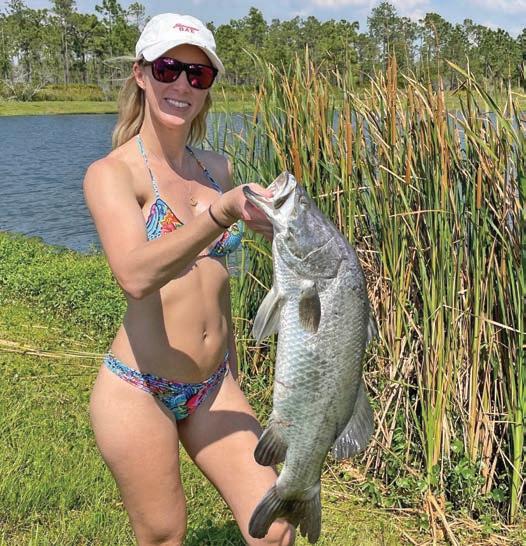


If you’re an avid angler seeking a one-of-a-kind fishing adventure, look no further than Osceola Outback Adventures. Located in Central Florida, just 45 minutes from the Orlando airport, Disney, and other attractions, this full-time guide service offers some of the Sunshine State’s most unique fishing experiences.
At Osceola Outback, you can embark on an unforgettable barramundi fishing expedition. What makes this experience truly special? Well, Osceola Outback is the first and only Barramundi guide service in North America. Native to Australia and weighing as much as 100 pounds, barramundi are hard-hitting, drag-screaming fighters that love to leap out of the water to display their power. The property is a working farm, ensuring that no angler goes home without hooking up multiple times. It’s a rare opportunity to catch these impressive fish!
Florida is a go-to state for bowfishing, thanks to its warm climate and abundant “non-game” fish. Osceola Outback offers both daytime and nighttime bowfishing trips. You’ll have the chance to shoot tilapia, gar, bowfin, and catfish in the state’s extensive network of lakes, ponds, and rivers.
Airboat Bass Fishing: Explore Uncharted Waters
For an adrenaline-pumping experience, try airboat bass

fishing. Osceola Outback’s custom-built airboats are equipped with 8-foot Blade Power-poles, trolling motors, and full walkaround fishing decks. With seating for three anglers and 500-horsepower motors, these boats can take you to places you’ve never explored before. It’s common for two anglers to land 60+ bass in a single 4-hour trip. Keep an eye out for alligators, wading birds, and birds of prey!
Known worldwide for huge stringers of largemouth bass, the Kissimmee Chain of Lakes offers fantastic fishing opportunities. Osceola Outback provides fully rigged bass boats, and their captains are United States Coast Guard certified and licensed. You can choose between fishing with artificial lures or locally caught live wild shiners.
Here’s something truly unique: Osceola Outback is the only place in the world where anglers can land an International Inshore Slam. This prestigious achievement consists of catching barramundi, peacock bass, and largemouth bass all in one location. With barramundi native to Australia and weighing up to 100 pounds, this is an angler’s dream come true.
Whether you’re a seasoned angler or a first-timer, Osceola Outback Adventures promises unforgettable fishing experiences. So grab your gear, cast your line, and get ready for an adventure like no other!

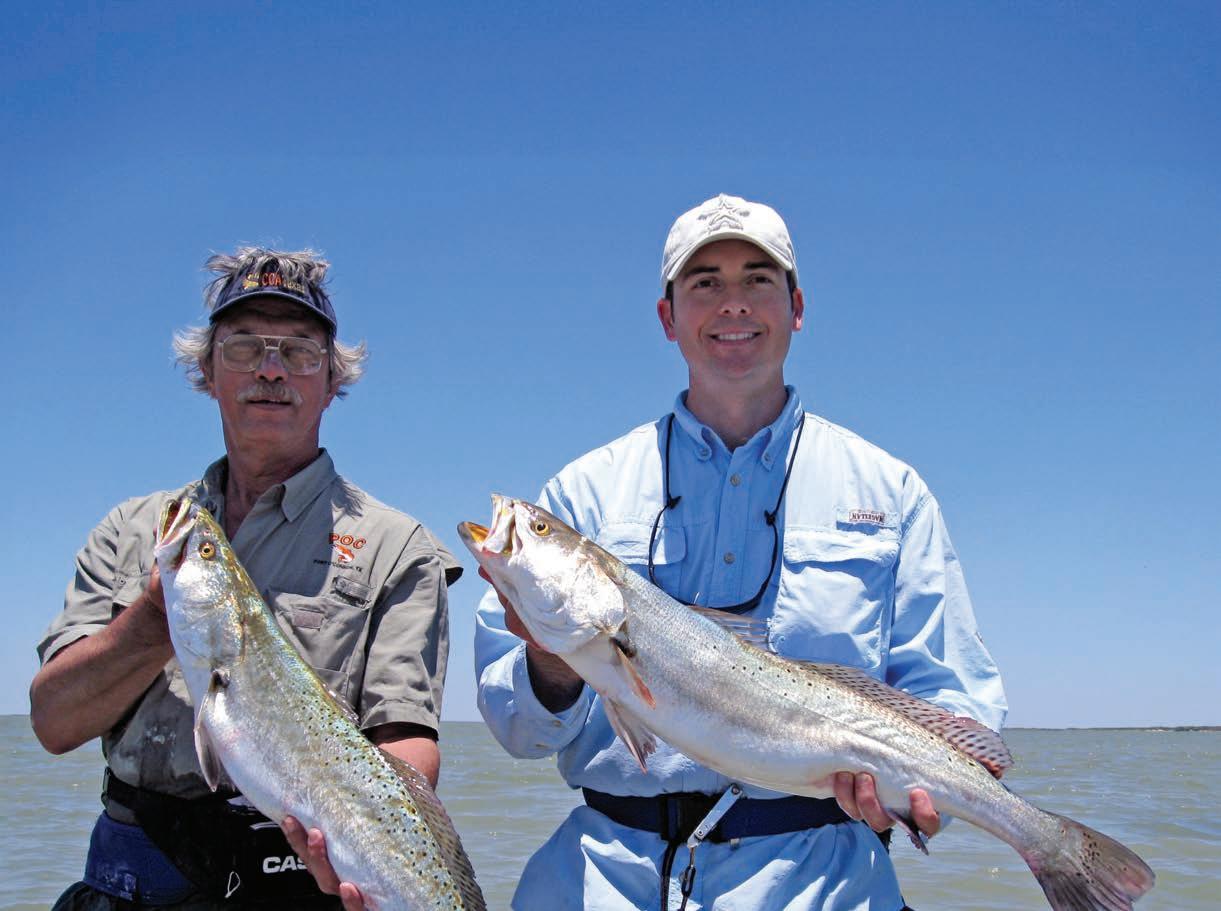
If you’re a dedicated trout angler like me, you’re probably eyeing the opportunity to land a personal best speckled trout before the spring spawn. While most Texas anglers focus on big trout from midDecember to early April, May offers a prime window for trophy fish, especially with the full moon on May 12 this year. The warmer weather also makes fishing more enjoyable, creating a perfect environment for those seeking actionpacked outings.
By Capt. Michael Okruhlik


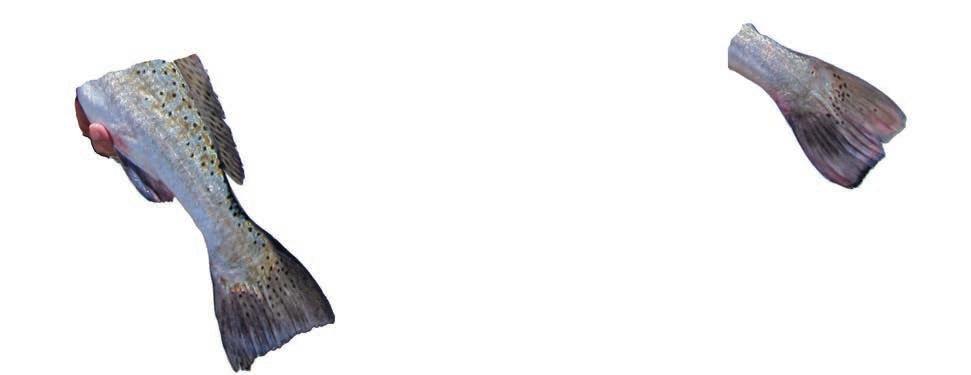
May sees many anglers shifting focus and putting away their waders. However, big speckled trout are still holding onto their eggs, making this an excellent opportunity to catch one before they spawn. The pleasant temperatures in May allow us to use more aggressive lures and speed up our presentations, a welcome change from the slow, careful approach required in winter. For those who enjoy a faster pace, May is the time to go.
One of my favorite techniques for targeting trophy trout in May is using topwater lures. The explosive strikes on the surface are thrilling, and the warmer waters make fish more eager to strike. But topwater isn’t the only option—slow-sinking and suspending lures also perform well. As a paddle-tail enthusiast, I recommend experimenting with 3”, 4”, and
I prefer fishing grass flats in water that is knee- to waist-deep. Flats with small creek drains or depressions are incredibly productive, as these features tend to concentrate fish. Shallow grass areas are ideal, and potholes can increase your chances of finding a big trout. These areas offer an excellent opportunity to catch a hefty fish before the season transitions.
However, fishing in May can be challenging due to the abundance of small baitfish in the water, like tiny glass minnows. Trout are often gorging on these minuscule meals, making it difficult to grab their attention with larger lures. The key is downsizing your lures to match the size of the baitfish. I’ve found that using the smallest lure you can cast effectively is the best approach when you see an abundance of small baitfish. Both hard and soft lures are effective, and colors like white and silver tend to mimic the forage closely.
irresistible.
Tandem rigs are another excellent option for spring fishing. By rigging two smaller lures, you can cast farther while still maintaining the proper lure size. A combination of small silver spoons and white bucktails works well when fishing around glass minnows. A small floater diver with a spoon trailer also adds an extra level of action.
In the spring, downsizing your lure presentation can make a significant difference in your success, potentially leading to the big trout you’ve been waiting for.
Capt. Michael Okruhlik is the inventor of Knockin Tail Lures®, and the owner of www.MyCoastOutdoors.com.



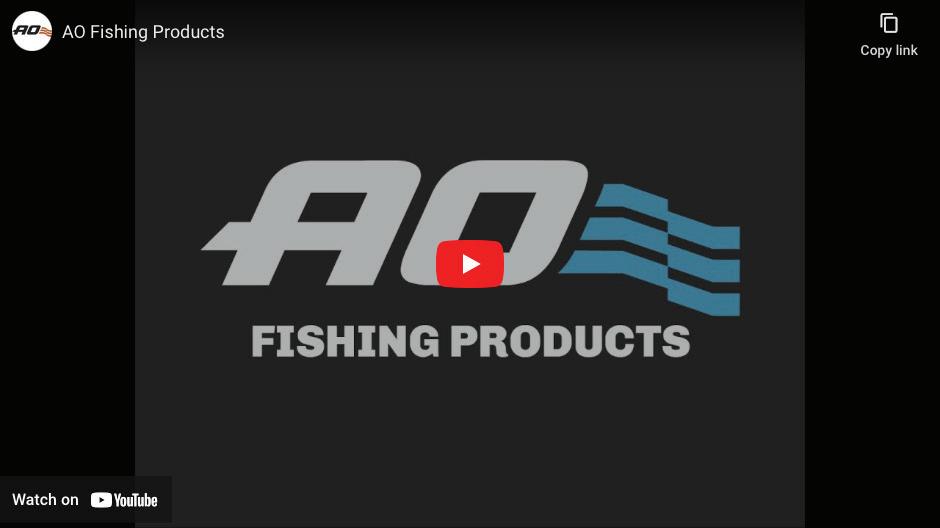

, the leader in high-performance soft-sided coolers, is hitting the water this year with new, upgraded fishing products. Our fishing team partners told us what they needed, and we listened!
Products are in stock and ready to ship; The Fishing Cooler Backpack, 2, 4 & 6ft Fish bags, Fillet bags, Boat fenders, EVA Traction pads, Inflatable Docks, ISUPs, and of course, our high-performance coolers specifically designed for use on boats, guaranteed not to leak, and to keep ice cold for up to 24 hours.
Thirty years ago, AO was launched to provide active, hard-core people with quality products at a reasonable price. We started selling our soft-sided coolers to the hard-core, go-fast boaters and fishermen in Lake Havasu. We aimed to keep ice in our coolers for up to 24 hours in 120-degree Havasu heat. That goal was accomplished 30 years ago, and we’re still at it.
We know our customers; they fish and boat in the summer and ride the dunes or trails in the winter. AO products give those high-octane souls greater freedom to embark on and enjoy what’s important to them.
Make sure that your gear does not hold you back from doing what you love. AO products are built to handle whatever offshore adventure is coming next.
AO is flexibly rugged, seriously fun, and honestly real!
We’re looking for active, adventurous folks that demand quality and performance from their gear. Share your adventure and send us your fish story or photo.
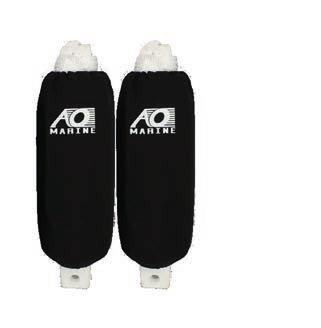
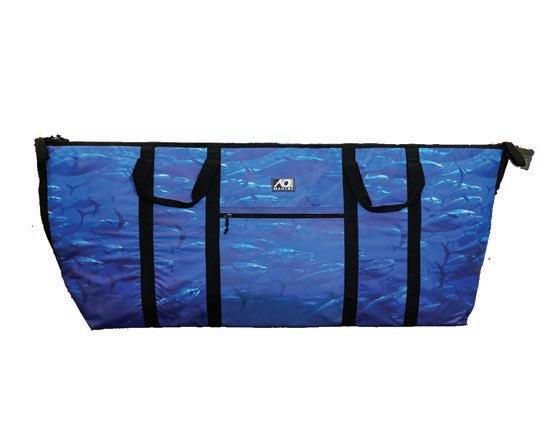

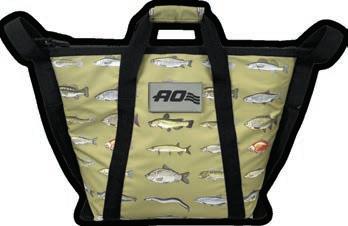


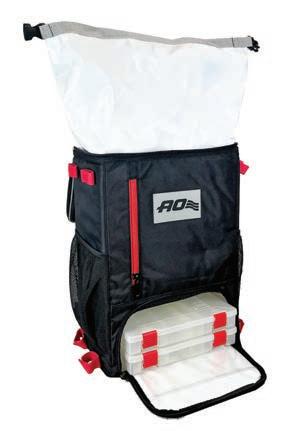


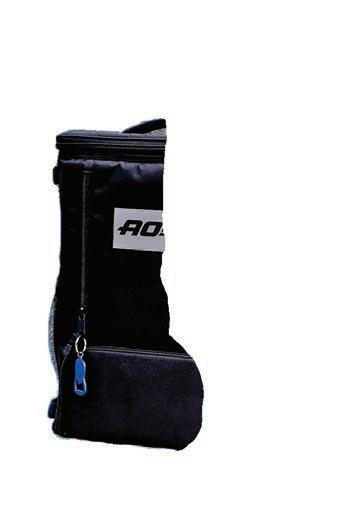
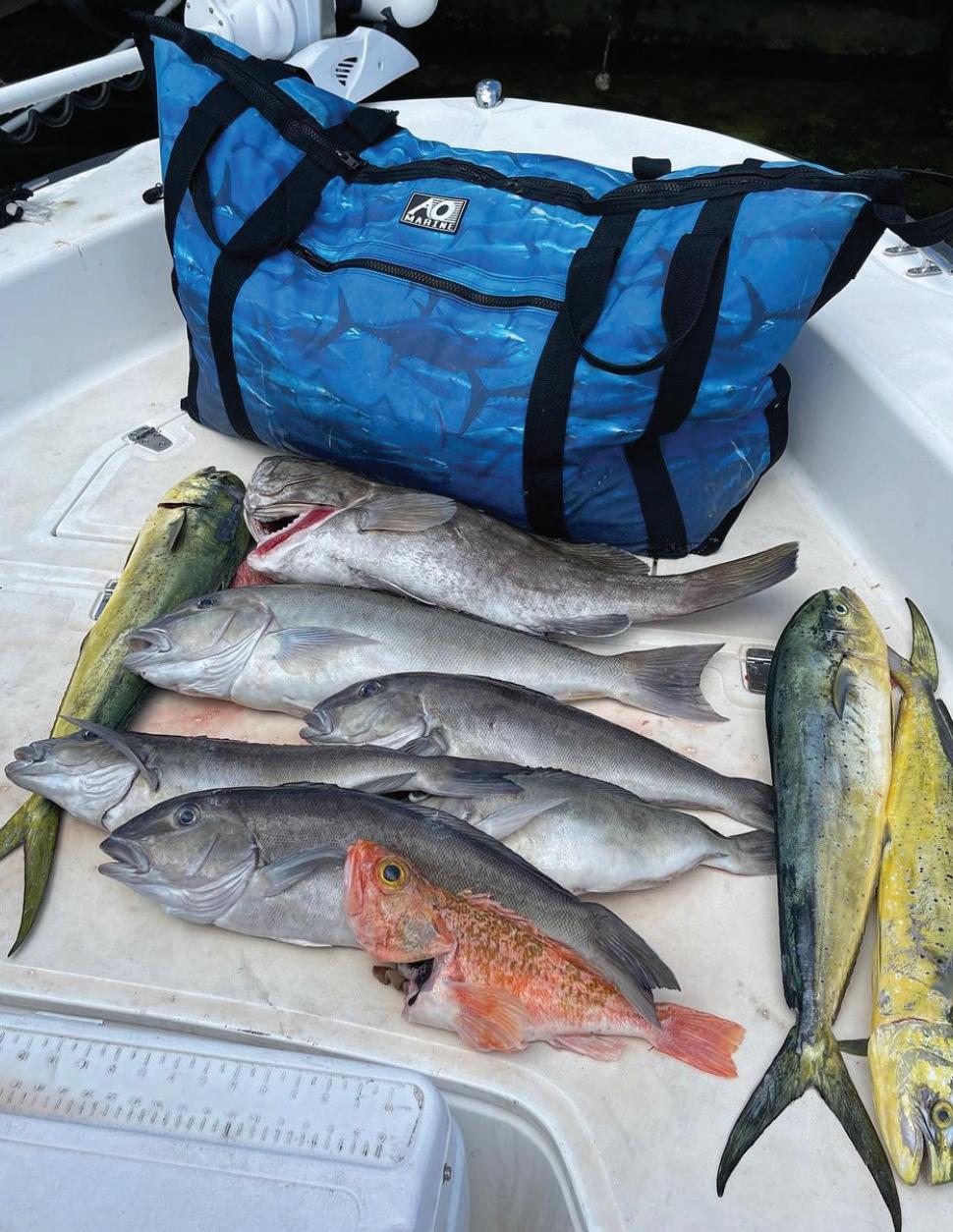
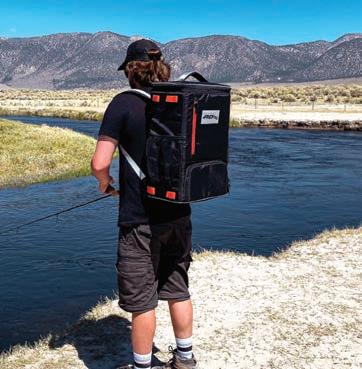



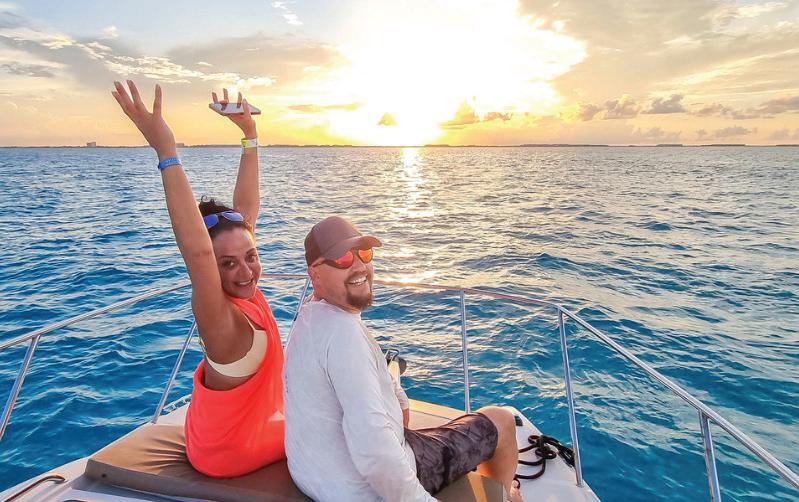
If you love the outdoors and dream of being in business for yourself—but not by yourself, now is the perfect time to make a change and choose a Coastal Angler or The Angler Magazine Franchise. We have freshwater and saltwater territories available throughout the country and abroad. Ask one of our specialists about franchise availability in your area.






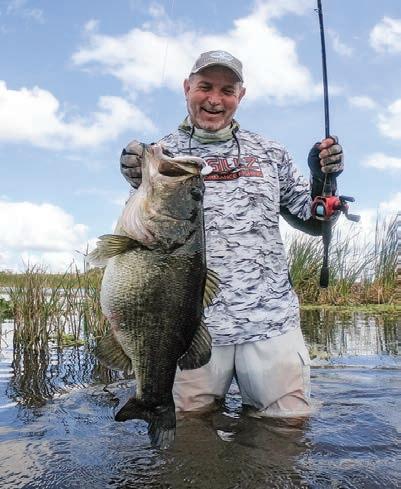


With a combined national readership of over a million per month and distribution to over 11,000 businesses in four regions, Coastal Angler Magazine and The Angler Magazine are the preferred resources for anglers and outdoor enthusiasts. Our brand is well known throughout the fishing world, and our free monthly magazines are recognized as well-designed, thoughtful publications that provide newsworthy and entertaining information pertinent to the marine and fishing industries.
An exceptionally rewarding and fulfilling business opportunity, as a co-publisher of your area’s Coastal Angler or The Angler Magazine, you’ll enjoy the benefits of controlling your own time and future. Our proven franchise publishing system enables individuals with no prior publishing experience to publish a credible and profitable localized version of our award winning magazine. We provide complete training and on-going support to ensure your success.
